
Best Places To Go Rock Climbing In Europe With Beginner Friendly Routes
By: Author Robyn Robledo
Posted on Last updated: March 10, 2024

I love Europe. I know it’s expensive and Southeast Asia is so much more trendy these days, but there’s just something about the food and architecture that draws me to it again and again. On our first 6-month road trip through Europe, we discovered some hidden gems that were perfect climbing destinations, especially for beginner climbers like us. Not only were these great rock climbing destinations, but most of these places are great destinations in themselves. The towns were either cute or the surrounding nature was worth visiting even without climbing.
If you are coming from the States, you will be amazed at how different climbing is in Europe. And by different, I mean numerous, popular, and accessible. There seem to be bolted walls everywhere and even the smallest towns have climbing stores making it easy to get beta. Plus, cheap camping options are abundant typically very close to the crag. But for us, the best part is the food and drinks nearby after a fun day of climbing!
If we missed your favorite climbing destination in Europe be sure to let us know in the comments section below!
Best places in Italy for rock climbing
This is a cute town just north of Lake Garda (northeast of Milan and Lake Como) in the Province of Trento. It’s a climber’s paradise with a dozen climbing stores lined up along the two cobblestone alleyways that make up this town. You will find inexpensive restaurants serving delicious pizza and huge servings of gelato. We happened to be there during a climbing competition, which was fun with vendors and events set up in the town square. There are many climbing areas near the town. Many of the climbing areas have maps at the wall showing the difficulty of the routes. It’s worth getting a climbing book at one of the many stores in town though. There are so many great routes in Arco however it is climbed a lot so popular walls can be quite polished.
I loved camping at Camping Zoo . It had an eclectic mix of cultures, a huge pool for the kids (don’t forget a swim cap), and there is a great bouldering area via Ferrata directly across the street. It’s only a ten-minute walk from the campground into town, making it a pleasant way to spend the evening after a hard day on the wall.
- It can get really hot here in summer though, so if you are looking to climb, it may be better to plan your trip here in the fall or spring.
- This entire region is lined with wineries and olive groves.
- The food is everything you’ve dreamed of when thinking of eating in Italy.
- Nearby Roverto has more climbing and eating options.
- If you make it here, you must drive another two hours to experience the Dolomites.
- If you are looking for a good warm-up route, try Facile (5.7, 90 feet) (GPS to parking area: 45.8658,10.8972).

Dolomites, Sella Pass
The Dolomites might be the most beautiful mountains in the world. We had a wonderful time climbing here at Sella Pass. While there are many places to climb in the Dolomites, we chose here because it had a lot of easier level climbs.
Getting up to Sella Pass from the Plan de Gralba side can be tricky in an RV because the roads are very narrow and tour buses drive up and down the windy mountain roads. We got squeezed between another bus and the guard rail on the way up and then broke down at the top of this mountain. It was a Sunday so of course no one could come help us, but the silver lining was that we got to spend one night camped out under these magnificent mountains. It was so gorgeous I stayed up half the night watching the lightning dance over the mountain peak. The next day we did the smart thing and parked in the town of Selva Di Val Gardena below and took the inexpensive bus up to Sella Pass. This is a much easier way to visit the pass even if you do have a small vehicle!
On the north side, Plan de Gralba, some parking areas allowed overnight parking, but no campgrounds that I remember of right in town.
South of Sella Pass, Canazei, is a much bigger town and has more options for camping.
There are also wonderful hikes you can do from the pass and the best part is that there is a cute chateau/restaurant at the top of the mountain.

Cinque Terre
If you go to Italy, this place is a must-do. While it is a bit more touristy than most of the other towns in this blog, the uniqueness of it makes it one of those places that you just have to experience for yourself.
We also loved the climbing area that is right by Camping LaSfinge campground . For climbers and hikers, you could easily spend multiple days here and the campground even offers free shuttle rides down to the Deiva Marina train station (which is how you’d get into the Cinque Terre). Not camping? Don’t worry. Camping LaSfinge also offers Bungalows to rent.
We have an entire blog on how to hike the Cinque Terre . The best part is that you can choose to hike just small portions of it or you can hike the whole thing.

Finalborgo, Finale Ligure
I wish we had spent more time here. The town center is so cute and has incredible restaurants. Funny story…when we went there to eat after climbing, it was the start of siesta and so the restaurants were closing up and one had to turn us away, but the owner, who spoke no English, was a little old lady who chased us down the cobblestone street to give us her last piece of quiche because she felt so bad about turning us away. The kindness you encounter while traveling is mind-blowing!
We camped near the beach at Camping Tahiti. It’s within walking distance of the beach and if you are looking for the Italian Riviera vibe, you will get it here since it seems to be a popular vacation destination for many.
This would be a great place if not everyone in your family/group was a climber because they could easily hang out on the beach while you headed to the rock walls. Plus there are plenty of food and entertainment options close by.

Best places in France for rock climbing
Oh, the Pyrenees! While it may not be the most epic climbing, it is the most epic ambiance. We can’t get enough of this region and for good reason…the food, the beauty, the people. It is incredible here and there are many options when it comes to towns to use as your home base. We loved Laruns (which hosts an incredible cheese festival in September) as well as Gavarnie (which has an urban sport climbing wall in the parking lot!). There are so many small climbing areas scattered around the Pyrenees and most of them aren’t on Mountain Project. Check Climbing Away or go to local climbing stores in the area to get guidebooks. When in doubt about where to go, just ask locals who always seem eager to help (might be helpful to know a few phrases in French though).
There are a lot of campgrounds scattered through this area and most towns allow overnight parking if you are traveling in a camper van.

Welcome to Neverland. Seriously, the gorgeous inlets of turquoise water with the stark white limestone background make you feel like you are in Peter Pan's Neverland. There is a lot of climbing here, but all of it requires a big hike. We started on the east side of the Calanques in the town of Cassis, which is very cute and has great restaurants and a delicious chocolate shop, but no climbing store. You will want beta on this region since there are so many climbs and the network of trails in the Calanques can get confusing.
We camped at Camping Les Cigales and walked from the campground to our climb, but it was about an hour and a half approach. You're in the French Riviera though so it's a day well spent if you ask me.
Pack a swimsuit and towel so you can go for a swim after you climb. Also, many of the routes are polished so keep that in mind when you choose your route.

Best places in Spain for rock climbing
I'll admit these might not be the "best" places for climbing if you are looking for just the best climbs. As I said earlier, for climbing destinations to make our list, they have to also have ambiance. Meaning, that we need something else to draw us to the area besides just the climbing because you never know if you are going to plan a vacation and it happens to rain the entire week. There has to be more to the area than just climbing. Naturally, if you are looking for the best dirtbag, hard-ass climbing then you'll want to go to Costa Blanca or El Chorro (both amazing Winter destinations ). But if you want to climb while experiencing other parts of Spain's beauty, then you have to head to northern Spain.
Bilbao Vicinity
This is a very general area. We've road-tripped through here twice and discovered many hidden gems. You could spend months in the area between San Sebastian and Gijon and barely scratch the surface in climbing. We are especially fond of the area around Dima as we made wonderful friends here and the mountains are drop-dead gorgeous. We also loved climbing in Urdiliz near Sopelana, mostly because it meant we got to surf and climb on the same day. I liked the area of Galdamas and it had a great mountain biking area, plus a cool restaurant to hang out at afterward. There is also a beautiful climbing area called Ramales that was tucked into the mountains and was also a great spot to climb.
There are a lot of campgrounds and camper stops all over Spain. We just downloaded the Camper Stop app and had no trouble finding places to sleep overnight. Plus, they are very cheap!
Don't forget about all the Via Ferrata along the northern coast of Spain. I highly recommend bringing the right gear to experience one of these climb hikes.

Lleida Vicinity
We stayed in Balaguer and I'll admit, it's not my first choice for climbing destinations. However, the climbing is REALLY good and if you fly into Barcelona and are heading to the Pyrenees, then this is a great place to spend a few days while you adjust to the time change. We enjoyed climbing Cubells and other areas around Camarasa and loved it. There is so much climbing that you do need a climbing book here.
We chose to Airbnb while here so we didn't get to check out the camping. But there are camper stops in the area and many discrete places to boondock.

Best places in Germany for rock climbing
Kraftwand (sonthofen).
I don't think you'll ever hear someone tell you to visit the tiny town of Sonthofen, but it was one of my favorite places to visit in Germany. It is just south of the larger town of Kempten, which has a fabulous farmers market on Saturdays that you can't miss. It was the sport climbing at Kraftwand that brought us here and it didn't disappoint.
We mostly climbed in the area just east of Bad Hindelang and the views of the mountains and the houses dotting the lime-green valleys are what made me fall in love with this area. I also loved that you climbed right next to a field of cows and cowbells. Go into the town of Sonthofen and get a climbing book at World of Outdoor in Sonthofen. There are also some great hikes in the valley just south of Bad Hindelang. Park near the church and follow the trails up the mountain to gorgeous waterfalls. Just ask a local and they'll point you in the right direction.

I hesitated to add this one because the actual Neuschwanstein castle that is here is very touristy and it was very expensive to camp here. Although I did love hiking above the castle since it was away from the crowds, there was one climb that was very easy with a nice overhung section that felt like climbing in a gym. We ended up at this climbing area because of the climbing book that we bought in Sonthofen. I must warn you though, there were a lot of mosquitos here!
Campgrounds are expensive in this area and they are strict about not allowing free camping.
Frankenjura
If you are a beginner climber, climbing in Sonthofen and Fussen is better than this spot. It's good to note that the bolting is spaced very far apart here, more than any other place we've climbed. I took some big falls here so naturally I'm not as much a fan of this area as the other two areas, however, there are so many routes, it's an iconic climbing destination, and there's such a wonderful culture of small towns around here that it's still a must-visit place for climbers.
I personally loved Camping Isand Bamberg . It's right on the canal, near town, had a huge brand new toilet block that blasted American pop music, and the little old lady at the front desk insisted on us ordering bread the night before.
Things to know about camping in Germany:
- Germans love to camp and the campgrounds were full of locals.
- Almost all the German campgrounds have restaurants on site.
- No campers kitchens though.
- You order your bread for breakfast from the reception the night before. It's very cheap.
- Camping can get expensive and there are not many areas to free camp.
- Showers are almost always free in Germany.
- Get your meat at the metzer.
- You can find beer and brats everywhere.
- The sausage wrapped pastries were so delicious!
- Bamburg is a little larger of a town with great architecture and a cathedral certainly worth stopping to see.

Best places in Switzerland for rock climbing
We loved, loved, loved this area. There is so much to do that I highly recommend you click over and read the blog that we have dedicated to this area . Climbing here in Switzerland is the antithesis of climbing in Frankenjura. It's almost too tightly bolted AKA great for new lead climbers. If you are a new climber or climbing with kids, climbing in Wilderswil is a great choice.
As the adventure capital of Europe, there are so many big walls and small crags to choose from. As always, I recommend hitting the local climbing store for beta on the best crag for you.
Free camping is technically not allowed in Switzerland (although we did find some discrete pulloffs just outside of town). We also stayed a few nights at a wonderful campground near Wilderswil.

Best places in Luxembourg for rock climbing
We stumbled upon this climbing area after hiking part of the Mullerthal trail . This is a great trail and fairly easy to backpack (or just do a long hike and camp as we did) because it passes through so many towns that you don't need to carry anything but a light backpack with water and a jacket. The rock formations on the trail are cool and there's even one spot (it's optional) where you need flashlights to hike through the rocks. It was very cool! And they sell the best burgers at Kimmes-Tossing Marco Campground for after your hike.
The best part of Luxembourg, however, was the rock climbing in Berdorf . Although it doesn't have very many beginner climbs, it's a pretty easy approach and one you will never forget. The sandstone rocks are nestled among a forest that reminds you of something you'd see in a fairytale.
We happened to be here on the day of a local festival and it was quite a wonderful experience sharing in this event with locals.
There are many campgrounds in the area. Bring your toilet paper though because no campgrounds here (or in the Netherlands) provide any.

Best places in the U.K. for rock climbing
Lake district.
Again, great ambiance. If you can get away from the busy areas by Windermere you will discover a gorgeous haven for rock climbing and some of the best scramble hikes we've been on. There is so much climbing in this area that you could easily spend a week here. U.K. Logbook has beta on the climbs, but again, there are so many that you probably want to grab a guidebook when you get there.

Peak District
In my opinion, this wasn't the prettiest area to climb, but it was good climbing for beginners and there were quite a few classic 5.8 climbs. The Peak District, being a very popular climbing destination, certainly has harder areas to choose from too.
A guidebook would be very helpful here because the Peak District is a very large area with lots of different crags.

Yorkshire Dales
I loved the atmosphere of climbing here, it's very unique especially if you are coming from the States. The limestone pavement was cool to see and while the climbing in Malham Cove was too hard for us (easiest routes start at 5.12), it was fun to hike to Mulham Cove and walk the limestone above the cave (it's a famous scene from Harry Potter movies too). There was quite a bit of beginner-friendly climbing in Gigglesick. There's also a sports crag above the town center of Settle Town that also has some easier climbs.

There is lots of great climbing around Llanberis, Wales. We only climbed at the quarry, but there were many other crags nearby and the town is dirtbag heaven. You have to eat at Pete's Eats. Not the best food, but the climbing culture there is fantastic!

UK Camping & Tips
There is plenty of camping in the UK. You will never have trouble finding a campground or just a place to free camp discretely for the night.
While the U.K. has some fabulous spots for hiking and climbing, I must say that if you are adventurous and love hiking and climbing, I would start my European explorations in France, Spain, Italy, and Switzerland first. There is just so much to explore in these four areas! But if you do find yourself in the U.K. you definitely should hike in Snowdonia, Lake District, and Isle of Skye.
Best places in Croatia for rock climbing
There are many crags in Croatia, but this one is the best because it has so many routes and in a huge range of levels, plus the approach to many is less than five minutes. It's at a national park so it does cost to climb here however every route in the canyon is marked with numbers to identify them. It's pretty rad plus the beginning of the valley has amazing picnic areas making it great for groups or families.
There are auto camps nearby, although they aren't like the nice campgrounds you will find in many other locations in Croatia. Check out our Croatia blog for more beta on that.

Best places in Norway for rock climbing
Norway is AMAZING if you love raw nature. We stumbled upon these two gems on our road trip through Norway. The climbing was clean with great holds and these two destinations are very close to campgrounds, towns with food, and a lifetime of hiking.
There are so many places to climb in Norway that I can't say these are the two best, but we had a great time at them.
Kvam is close to the town of Sogndal and we camped at a great campground, Kjornes Camping .
My favorite place though was Stryn, Norway. A off-the-beaten path, but insanely gorgeous. We climbed here and camped here . Check out our Norway campground blog or Norway hiking blog for more beta.
Though it doesn't include every destination in this blog, this guidebook is a great overall book for finding great rock climbing in Europe!
Related blogs:.
- Guide To Tent Camping In Europe
- Arco, Italy: A Climber's Paradise
- How To Hike The Cinque Terre
- Outdoor Adventure Road Trip Through France
- Four Best Scramble Hikes In the UK
- 3 Reasons to Visit Interlaken and How To Do It Cheaply
What's your favorite climbing destination in Europe? Let us know in the comments section below!
Share the love or Pin it:

Hey! We're glad you found us! You may want to also join us on Instagram and follow our travels. .
Notify me of follow-up comments by email.
Notify me of new posts by email.
This site uses Akismet to reduce spam. Learn how your comment data is processed .
CATHERINE BEYT
Monday 4th of March 2019
I own a travel agency and one of the children that is part of a family is looking to go climbing in Switzerland, would you have a company that you know of that does guided climbs? The mother doesn't want him doing this alone and would feel better if there was a guide. He will be 18 years old.
Wednesday 6th of March 2019
Hi! I have not used a Swiss climbing guide company myself but have heard great things about Swiss Mountain Guides (http://www.swissrockguides.com)
The Crag Journal
Climbing in norway: a scandinavian road trip.
We were fortunate enough to spend 7 weeks in Norway, enjoying a stunning road trip and sampling many of Norways best climbing areas. We drove up Sweden to arrive in Northern Norway in peak climbing season, starting with Lofoten. After visiting more crags further north, we made the long and beautiful journey down the west coast of the country. The crags will be described in the order we visited them, so depending on where you plan to climb in Norway it might be worth starting from the bottom of the article. The country is full of mountains, fjords, rivers and crags – we only visited a small selection of what’s on offer, even on our relatively long trip.

Guidebooks for Climbing in Norway
27Crags is very useful throughout Scandinavia and there are an enormous amount of Norwegian crags on the database. The topos, approach notes and relevant information are usually kept up to date and the app is very user friendly. As a single resource, and for the price of subscription, it is definitely worthwhile.
Climb Norway: A National Guide is a very selective guide with a broad range of climbing locations. The crags included can be hit and miss, some of them are superb and others aren’t worth visiting. The main strength of the book is it covers areas across the country so it is very helpful for a road trip. The negatives are the very basic descriptions and approach notes for some crags. Sometimes you will need to use another source of information to have a decent chance of finding the place!

Rockfax Lofoten Climbs is the only guidebook for routes on Lofoten and it includes all the places you would want to visit as a non-local. The information is mostly accurate and the topos are good quality. We did find the book had a tendency to over hype some venues, don’t expect every crag to be amazing.
Bouldering in Lofoten is an extremely worthwhile guide for anybody visiting lofoten. The guide has a great spread of locations across the islands and the quality of the bouldering on Lofoten is superb. The book is really well put together and saved many climbing days when the weather was poor.
Below is a map of the different crags we climbed at in Norway, so you can see where they are in relation to each other.
Weather and Climbing season in Norway
If you want to climb dry rock in Norway then summer is the time to go, with June, July and August giving the best chance of dry weather. In high summer there is 24 hour daylight in the northern parts of the country, which drastically increases your chances of getting good climbing conditions. Naturally, the further south you go, the longer the climbing season is. Ultimately, any time of year could prove to be wet and dry spells are never guaranteed…it is likely you might get more use from your coat than your suncream!
We found that Yr.no was the best forecast and in the short term it is usually very accurate. However, don’t pay much attention to anything more than a couple of days ahead as it will probably change completely before the time comes.
The Lofoten islands are among the most famous places in Norway – to climbers and tourists alike. The archipelago extends away from the mainland and arks far out into the sea, famous for its natural beauty and picturesque fishing villages. For climbers, Lofoten is synonymous with trad climbing and multi pitch routes by the sea, although there is the opportunity to do pretty much any type of climbing you desire.

The islands are quite big and spread out, so at first it seems like you will be constantly driving between crags. However, the climbing is very much centred around Henningsvær & Svolvær and the Rockfax guidebook covers relatively little outside of these areas. The bouldering guidebook has a much better spread of locations and is a great way to see some quieter parts of Lofoten.

We enthusiastically dusted off the trad rack, looking forward to the best of what Lofoten had to offer. Unfortunately one thing hampered us…the weather. Despite it being July, the peak season for climbing in the area, we struck a particularly grim spell of weather. We spent 10 days on Lofoten and it rained on 9 of them (and the forecast wasn’t improving when we left), with the one dry day seeing big queues of climbers for the classics. After lots of rain dodging, waiting around on busy routes wasn’t appealing so we pottered on some single pitch routes during the day and then opted to climb at midnight to avoid the crowds. This limited us to shorter objectives as we certainly don’t have the stamina to do long routes in the small hours!

For the rainy days, sport climbing and bouldering were the saviours. As most boulders receive no run off and are exposed to the wind, they dry very fast and you only need a few hours without rain for them to be ready, while Presten will still be soaking. Because of this, we think the bouldering guidebook is an absolute must for Lofoten, doubly so because of how good quality the problems are. The best sport crag on Lofoten is Eggum, an awesome venue that is thankfully steep enough to stay dry in the rain. The rock is really beautiful and atypical for the area. The crag has around 40 routes ranging from 6a-8b, with the majority in the mid 7th grade.

From the climbing we managed to do, it was high quality, but not really any higher than other parts of Norway. As a location on the trip, it wasn’t our favourite, mainly due to how extremely busy it was. Lofoten felt like much more of a ‘honeypot’ than any of the other places we visited. Of course we have a somewhat biased view because of the weather! Despite this, the islands are truly beautiful and some of the rock is really fantastic. We don’t want to put anyone off, and we would probably go back, but we thought it is worth saying it isn’t the be all and end all of climbing in Norway.
Senja is an area best known for its winter season, with the island having an incredible amount of ice and mixed climbing. Senja is the second largest island in Norway (excluding Svalbard) and it is a relaxing and peaceful place to be. For rock climbing, there isn’t a huge amount developed or documented in Senja, but when it comes to hiking and fishing it has an abundance of both. We decided to visit Senja after leaving Lofoten and after spending some time there we took the ferry from Botnhamn to Brensholmen on Kvaløya. The journey from Svolvær to Brensholmen is actually a shorter distance when you go via Senja, although the journey time is slightly longer. This makes Senja an obvious place to include on a road trip and although the rock climbing isn’t the best or most abundant in Norway, the spectacular scenery and atmosphere more than make up for that.

The boulders at Tungeneset are the perfect place for a quick session, with a short approach, fast drying rock, good landings, free toilets and a great view. The blocks are on the national tourist route and the area is a popular spot for holiday makers on the island. Despite this, it will never feel as busy as Lofoten. There are currently only 10 documented problems, topos for which can be found on 27 crags . There are clearly loads more boulders in the area and you wouldn’t have to walk far to find some new blocks. Although its only a small area at the moment, it is a lovely place to stop with a lot going for it and it was great fun climbing here after spending the morning being rained off.

Ørnfjord is a truly stunning part of Norway and the climbing here is in a great location, less than 20 meters from the waters edge on a secluded disused road. There are currently 10 routes here, several of which have 2 pitches. At the time of writing, 7 of the routes are fully bolted and the rest are trad. Some of these are retro bolted so the venue may become entirely sport in the future. For information and topos the Facebook page ‘ Ørnfjord climbing crag ‘ has all the information you need. The routes here are mostly low grade, around N5, slab climbs on lovely quality rock. The crag almost looks like limestone from a distance, but it is actually a lovely textured granite.

From the crag parking it is only 1.5 km to the trailhead of Segla, one of the most famous hikes on the island. We walked after climbing to save ourselves the expensive parking fees at the trailhead. There are also several other nice hiking trails up Hesten and Barden. The area around Fjordgard is stunning, with the finger shaped peninsulas of Senja covered in aesthetic peaks and having a never-ending amount of gorgeous coast line.

Kvaløya is the fifth largest island in mainland Norway and it is the furthest north we went on our trip. This is mainly because Kvaløya is one of the last ‘climbing dense’ areas in the north of Norway, the other being the Lyngen Alps – which is much more a mountaineering and winter climbing area than somewhere for rock climbing. Of course, there will be plenty of rock further north, the whole country is brimming with rock, but visiting areas with lots of venues gives you a much better chance of overcoming bad weather and make the most of your trip.

Although there is a guidebook for Kvaløya we were told by local climbers that it is old, out of print and difficult to get your hands on. Luckily there is an excellent online website with the climbing areas and topos online here . Kvaløya is close to the city of Tromsø, supposedly home to the worlds most northern university. Many climbers you see out in Kvaløya live in Tromsø, which has a good climbing scene and a reasonably big climbing gym.
Brensholmen
Brensholmen is one of the most popular climbing areas in Kvaløya and understandably so, it occupies a beautiful location by the sea and has a good selection of quality routes to choose from. The rock here is quartzite and some of the routes climb almost exclusively on quartz holds that have some beautiful and unique forms. There are currently around 60 routes here, the majority of which are bolted. The grades range from 5a to 7c+ and a few of the routes can be done as two pitches. The Climb Norway book only includes one small sector of Brensholmen so we almost didn’t visit as we thought there were only a few routes. Use the Tromsø Klatring website for more topos and a better approach map.

Just before the crag is a beautiful sandy beach, perfect for swimming, with a lovely flat grassy bank that makes a great camping spot. Brensholmen is right next to the ferry port that goes to and from Senja and it is a great first stop when you arrive on the island. The whole experience felt like a holiday in itself, when the sun shines you feel like you could be in the south of France, just with less people and better fishing! The climbing here is really nice and it would be easy to hang around here for a while, but make sure to visit the other crags on the island as both of the other areas we climbed at were just as good, if not better.

Ersfjorden was an area recommended to us by local climbers and before we met them we had spotted the area online but didn’t feel overly drawn to it. When we did visit, we understood completely why they recommended it, the rock quality is very high and the sectors are very unique, with stunning views. Ersfjorden itself is a gorgeous village that feels very tranquil and remote, despite being only 20 kilometres from the centre of Tromsø. There are over 150 routes here, mostly sport but there are also several trad routes, with a big spread of grades between them. With the quantity of rock, you could probably go on climbing routes and boulder problems here for years.

The climbing is spread across boulders of all shapes and sizes scattered across the hillside. Some of the boulders have low-ball problems and some of them are over 30 meters high. There are all sorts of walls, cracks, pinnacles and roofs, you can climb here in pretty much any conditions if you’re psyched enough. Ersfjorden is really popular with local climbers, owing to its quality and proximity to Tromsø. Weekdays are quiet but in the evenings, or at the weekend, the place comes alive with lots of enthusiastic locals keen to make the most of the summer. Ersfjorden felt like the epicentre of climbing on Kvaløya.

Gullknausen
Gullknausen is a superb crag, with several high quality routes and an unforgettable view. Currently there are 15 sport routes, 9 trad routes and many projects here and no doubt there will be more in the future. We met some really friendly local climbers at Gullknausen, who were attempting a trad project which looked both hard and terrifying and we did find the other routes here had an element of spice to them! The main crag is in a ‘Z’ shape, with 3 really nice walls, a soaring arête and a corner. The walk in is beautiful in its own right, even if it is a bit long. When you get there you are at about 400 meters elevation, but with the fjord almost directly beneath you. The crag is on a ledge on the side of the mountain with a near vertical rock and grass slope plunging right down to the waters edge.

Grade wise the crag has a reasonable spread from the French 5s and 6s up to the low 8s. The lions share of the routes are in the 7s with some stunning routes in unlikely terrain. The granite here is quite different in style from most other crags in the area and the name Gullknausen actually translates to ‘the golden nugget’, referencing the colour of the rock. Due to the crags shape, various walls receive sun or shade either frequently or barely at all, with the warmest sector coming into the sun at about 2pm in the summer. Even in the warmer months the shady wall can feel cold so it is worth bringing a warm jacket, especially if you will be stood around belaying for a while!

Flatanger is the sport climbing area in Norway, known worldwide for its cutting edge routes and stunning location. There are around 300 routes here spread across several sectors, with the grade range being about as wide as is possible – with routes from 4b to 9c! Although it is possible for people of all levels to climb here, to access a decent amount of the best routes it is ideal to climb at least in the 7a-7c range. At this level you can enjoy climbing at the world class Hanshallaren, as opposed to the other sectors in the area. The Hanshallaren cave and the walls coming out of it are the star attraction and the other sectors look a bit rubbish in comparison.

The rock at Hanshallaren is mind blowing and even though we had seen loads of videos before we arrived, it is truly difficult to appreciate the scale and quality unless you are there in real life. Unsurprisingly, some of the world’s hardest routes look even harder when you’re stood beneath them! Crucially, the granite here is some of the best you can find in Norway, with beautiful strata bands and uniquely formed holds. The other sectors pale in comparison, as do any other crags in that part of Norway.

Perhaps one of the only downsides to Flatanger is the slightly awkward access situation. There has been a bolting ban for a number of years now, as the crag is on private land. Generally the bolts are good but on some routes they are a bit rusty, not to mention how it stifles new route potential. The parking is also on private land and is paid for, by Vipps app (only works with Norwegian banks) or by going to the landowners house to pay. It wasn’t unusual to see or hear of people getting told off for various reasons and it made the place feel a bit tense. Don’t let this put you off visiting, the superb climbing more than makes up for it, just be aware of the specific circumstances in Flatanger.

Hell, with its name lending itself to many jokes, is a crag that was well hyped as a place worth visiting. As such, we went with relatively high expectations and felt somewhat underwhelmed. While the conglomerate rock is very nice and gives a welcome change to granite, the crag is quite small and in a poor location, opposite a noisy and ugly recycling centre. We found the routes suffer a lot from water runoff from the forest above, and many of the classic routes were dirty and mossy even after several dry days. Between Hell and the close by New Wave sector, which is different rock, there are some nice routes with some fun climbing and cool features. There are around 130 routes here, from 4 to 9a+ and generally speaking the harder the route the better it is.

In our opinion, it would only be worth visiting if you have a reason to be in or near Trondheim. If we had our time again we would skip Hell and spend more time at Flatanger!
Kvitnes is a really nice crag, right by the sea, close to the town of Kristiansund (not to be confused with Kristiansand). The Climb Norway book has over 60 routes detailed for Kvitnes, although there are actually quite a lot more than that (as well as other crags in the area), details for which can be found on the kristiansundfjellklubb website. The rock quality here is really high, and some of the routes cover really impressive terrain for the difficulty level.

We really enjoyed the crag and the location, but one of the downsides was that a large quantity of routes were wet and didn’t seem to have much chance of drying quickly. Thankfully we were still able to do some climbing, but it is worth knowing Kvitnes is not a good option for continued bad weather. It might not be like this usually, as a local told us it was the wettest summer they can remember. Regardless of the weather it is a beautiful area with some really high quality rock and it is definitely worth visiting.
Beachen was possibly our favourite place to climb south of Flatanger, with loads of great routes at a variety of levels. The best thing about the crag is you can climb a top quality 7b, walk 15 meters and belay someone on a top quality 6a. In total, Beachen has around 60 routes with grades starting in the 4s and going up to the low 8s. The steep sector Overhenget will stay dry in the rain and the quality sector Bølgen drys very quickly. The approach is short and access is really straightforward, the fjord is close by for swimming or fishing too.

At our grade level, we could have spent quite some time climbing at Beachen, with so many of the routes climbing on great rock. We felt Beachen was one of the ‘premier’ sport crags in Southern Norway. The only real downside to Beachen is that it can get very busy, with the bottom of sector Overhenget becoming quite crowded, especially at weekends. It is easy to avoid the crowds if you rise early, as apparently people can’t seem to make it to the crag before lunchtime! Coincidentally we also found the conditions to be better in the morning, when the crag is cooler and the holds feel less greasy.
Fiskesleppet
Fiskesleppet is a quiet venue on the island of Sotra, a short distance west of Bergen. The island is large and has lots of different crags with trad, sport and bouldering as well as lots of great coastline. The crag has over 50 routes from 3-7c+ and roughly half of the routes are bolted. We found the grading at Fiskesleppet was all over the place, with routes at the Dr. Shrimp sector, like Sandpistol, being desperately sandbagged. Meanwhile, other routes, like Hysa at its eponymous sector, were soft for the grade. Overall, while the crag is nice enough, there is nothing here making it worth a big detour. The best thing about Fiskesleppet is its location on Sotra, which is a very charming part of Norway.
Sirekrok is one of the best crags we visited in southern Norway. The location is tranquil, the routes are long, good quality and most importantly of all the crag is rain proof. We climbed at Sirekrok in torrential rain and the vast majority of routes stayed completely dry. The approach is short and straightforward so you won’t get soaked walking there either. There are around 40 routes at Sirekrok and the grades range from 6b-8b+.

Although the rock is granite, like most Norwegian crags, at Sirekrok the routes climb much more like limestone and it will feel like a taste of home for many European climbers. The climbing is very athletic, in a steep overhanging wall with lots of bulges and overlaps. Being able to climb between 7a-7b will give access to a number of great quality routes that go the full height of the crag and have some pretty wild exposure. Below those grades there are still good routes, but the lower graded ones won’t be weatherproof.
Urdviki took us by surprise, the crag doesn’t look like much from the road and it isn’t particularly mentioned as a good crag to visit. When we arrived at the crag we were really impressed, it is massive, with very high quality rock and some superb lines. For us, the only problem with Urdviki was the ratio of easy to hard routes, if you climb 7c or harder then it is heaven on earth in Norway. For the lower grade range available, 6b-7b+, there are plenty of amazing routes, but maybe only enough to last for a handful of days. for example there are 19 routes 7b+ or lower and 23 routes 7c or harder.

We did find that the grading at Urdviki was very fair, the routes very well bolted and often cruxy. It is the perfect venue to push yourself on harder climbs than normal and make the most of some of the gorgeous rock here. On one section of the crag, the granite has a totally unique appearance, with incredibly smooth rock that has beautiful rounded grooves running through it. We can only describe the climbing as ‘reverse tufa’ and it is one of many different styles at Urdviki. We have only got positive things to say about Urdviki, the crag is fantastic. The approach, however, is a bit full on – especially in the wet!

Sykehusveggen
Sykehusveggen is like a Kristiansand city crag, a short wall with 38 routes from 4a-7c+. The wall is not amazing but the rock is nice and access is incredibly easy. You park right next to the crag and the walk in is measured in seconds, not minutes! The crag is particularly worth including as a lot of people visiting Norway will arrive on the ferry in Kristiansand making Sykehusveggen a great quick hit of climbing on the way out or the way home. A side note is that some of the routes seep and a large amount of the crag will be wet after rain, despite the steepness.

Ula is an extensive bouldering area on the coast, with some really beautiful rock in an idyllic setting. In the vicinity of Ula there are around 300 problems, from very low grades up to a maximum of around 8A. The problems have generally good landings and some of them are quite high. 27 Crags is the best place to find topos for Ula, and it is really easy to locate the blocks using the app.

Ula feels like a really special place and when you’re there you feel like you’ve been transported away from Norway to somewhere Tropical! The rock is superb and has an extremely smooth texture to most of it. In Ula, knowing how to place your feet is worth more than strength.
Hyggen is a popular crag, not far from Oslo, with over 60 routes at a big spread of grades. The crag has a really short approach and many routes are sheltered from the rain due to the steep roofs at the top of the crag. The rock quality here can be a bit hit and miss, the Tango sector has some really great rock, whereas the Seven sector is a bit flaky in places. The venue is popular with local climbers and the routes seem to get climbed quite frequently. Hyggen is one of the nicer crags near Oslo and is worth a visit if you are in the area.

Hauktjern is considered to be the premier sport crag of Oslo, with a huge amount of climbing from the 4th grade up to the low 8s. The crag is situated in a beautiful location, next to a lake in the forest and it doesn’t feel at all like you are so close to the city. The approach is about 30 minutes walking from the parking at Østmarkveien, many people cycle from the city and the majority of the path is perfect for a bike. People chain their bikes up and walk the last few hundred meters to the crag. The proximity to the city means the crag gets busy on weekends or in the evenings after people have finished work. There are in excess of 150 routes and some of the sectors are quite well hidden so it should be possible to enjoy a quiet route to yourself most of the time.

Rest day activities
A country so full of mountains and fjords is equally brimming with quality hiking trails, offering everything from short jaunts to multi day journeys. Some of the hikes in Norway are incredibly famous, such as the Trolltunga. While they certainly look amazing, we decided to skip them due to the €50 parking fee, yes you read that correctly!! The outrageous charges make the popularity very surprising, Norway isn’t short of beautiful places and you can go somewhere much quieter, for free, and it will still be stunning. Norway also has a very liberal attitude to camping, and it is perfectly normal to go for a few days hike and take your tent with you, to enjoy the mountains in solitude.

Norway has access to a huge amount of water, it actually has the second longest coastline in the world (when including Svalbard), with only Canada having more. The water quality is superb and you’re never far away from a stunning bathing spot. A post climbing swim in the brisk waters will keep you feeling fresh and is a great way to get some exercise in nature. The water will feel a bit on the cold side at first but you soon get used to it, in the summer months the temperatures are comfortable for spending a reasonable amount of time in the water without a wetsuit.

If you eat fish, then fishing in Norway is an absolute must, it is so good it feels like cheating! Although we are amateurs at fishing, with only a basic & cheap set up of various spoons, spinners and miscellaneous lures, we got some awesome catches. Never ending Mackerel, Cod, Pollock, Cole fish, Trout and more were all caught on our simple gear. The only thing that seemed to be of any importance was choosing a good spot, which is simple when you get your eye in and know the tide times. If you desire you can eat fish everyday and it makes for a great evening of fun after you’re done climbing. Better still, many of the crags are less than 10 minutes walk from great fishing spots so you don’t have to go far. With our successes we often joked if we were actually on a fishing trip with some climbing on rest days!

Alongside fishing, foraging is a staple pastime in Scandinavia and is all part of the pleasure of being in the northern climate. The season is relatively short but very intense, with huge gluts of berries and mushrooms appearing when the weather is right. We harvested enough berries to make our own jam, which tastes great and is significantly cheaper than anything you’ll find in a Norwegian supermarket! It is worthwhile looking into the various types of berries, for example the common bilberry (Vaccinium myrtillus) which is common in the UK is not as sweet or juicy as its relative the bog bilberry (Vaccinium uliginosum). The different varieties have their own strengths and weaknesses, e.g some are better in jams and others best eaten fresh.

Travelling through on a road trip you can find wild strawberries, raspberries, cloudberries (our favourite), and Lingon, as well as less commonly eaten species like bearberry (make sure you 100% know what you’re doing before you eat anything!). There are an endless amount of plants that can be used for everything from salads to fragrant tea and it is surprising how much vigour the plants have in the summer months.
We had a great time climbing in Norway, and enjoyed the scenery and the nature just as equally. Norway is a very expensive country to visit, but by stocking up before we visited, camping out of a Citroen Berlingo and living a basic existence we managed to keep the cost at an affordable level. The climbing varies massively from world class crags like Flatanger, to ‘local’ venues like Fiskesleppet. We tried to describe and show what the areas we visited are really like, so you can make an informed decision on whether to include or omit any areas on your own trip. Personally, we enjoyed the North of the country the most, with Kvaløya being a highlight in every way. Further south, Flatanger, Beachen, Sirekrok and Urdviki were the standout areas. These are the crags we can really recommend as being some of the best venues on offer in Norway.
We write for pleasure and climbing is our passion. Our articles will never be paywalled. However, if you would like to help towards the costs of running the site or if you have found our content useful please consider contributing here.
You can read about the other half of our Scandinavian road trip in Sweden here .
Relevant information and resources
Climb norway: a national climbing guide.
https://www.needlesports.com/Catalogue/Books-Media/Guidebooks/Scandinavia/Climb-Norway-COR-CE707
Lofoten guidebooks
Bouldering in lofoten https://lofotenbouldering.com, rockfax lofoten climbs https://www.needlesports.com/catalogue/books-media/guidebooks/scandinavia/lofoten-climbs-cor-ce561.
Tungneset 27crags https://27crags.com/crags/tungeneset
Ørnfjord https://www.facebook.com/KlatringSenja/
Kvaløya online guidebook and topos
https://klatreforer.tromsoklatring.no/browse
Share this:
4 thoughts on “ climbing in norway: a scandinavian road trip ”.
Lovely, lovely, lovely post guys. You have covered a lot of different areas with really nice and plenty info!
Thanks for the great posts!
Like Liked by 1 person
Thank you, we’re really glad you enjoyed it!
Love the awesome photos!
- Pingback: Climbing in Sweden: A Scandinavian Road Trip – The Crag Journal
Leave a comment Cancel reply

- Already have a WordPress.com account? Log in now.
- Subscribe Subscribed
- Copy shortlink
- Report this content
- View post in Reader
- Manage subscriptions
- Collapse this bar
You will be redirected to your dashboard shortly. We will also call you back in 24 hrs .
- 10 Best Destinations For Rock Climbing In Europe In 2024
What makes a destination ideal for rock climbing in Europe ? The answer is easy accessibility, small crowd, plenty of routes, single and multi-pitch options, and scenic routes. If you’re traveling with your friends and family, it is unlikely that you all are at the same fitness level. A little variety is excellent for working on your technique.
10 Spots For Rock Climbing In Europe
We have shortlisted 10 stunning places for rock climbing in Europe where you can build your strength and improve your climbing skills:
1. Frankenjura, Germany
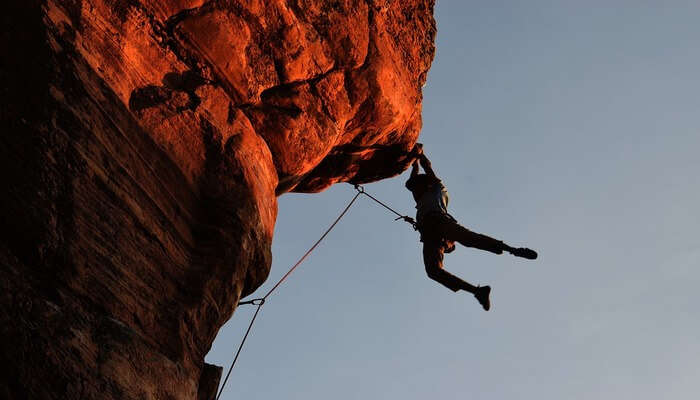
Image Source
Frankenjura’s position as one of the places for best rock climbing in Europe remains uncontested. Hidden amidst lush forests, it has over 1,000 crags of overhanging or vertical white and grey limestone. It offers both single-pitch and short routes. The best time to pursue rock climbing in Frankenjura is late spring since the winds are not too strong in that season.
Nearest airport: Nuremberg Airport Difficulty level: Low to moderate
Must Read: 10 Churches In Netherlands Which Offer A Glimpse Of The Ancient Structures Of Europe!
2. Finale Ligure, Italy

With more than 3,000 routes, Finale Ligure is the largest climbing area in the country. It is situated amidst verdant hills and lush green valleys. The destination offers more than 3,000 routes of low and moderate difficulty level. From walls and overhangs to white limestone slabs, you will be spoilt for choice. There are 3-4 route pitches to Bric Pinarella, from where routes are up to 250 meters long. For your rock climbing holidays in Europe , make a beeline for Finale Ligure.
Nearest airport: Genoa Airport Difficulty level: Low to moderate
Suggested Read: Indian Restaurants In Vienna: A Taste Of Home In The Heart Of Europe
Europe Holiday Packages On TravelTriangle
Explore the most beautiful places to visit in Europe, from Paris to the Venice canals and from the Greek islands to the Swiss alps. Book customized packages by expert agents on TravelTriangle. Inclusive of airport transfers, cab, resort, sightseeing and meals. Best holiday experience Guaranteed. Book Now

Magnificent Switzerland Holiday 6D/5N Package @ Rs 69,999
Plan your trip today!

Magnificent Europe Tour 7D/6N Package @ Rs 70,975
Get quotes from multiple travel experts.

France & Switzerland Tour Package 8D/7N @ Rs 90,000
Compare & customize quotes before booking.

Scintillating Spain & Portugal Tour 11D/10N @ Rs 101,150
Have Questions? Talk to our travel experts today.
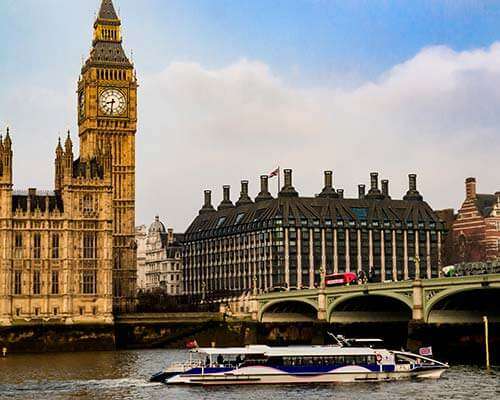
6 Country Europe Tour Package 12D/11N @ Rs 118,650
Best prices guaranteed. EMI option available.

See more at TRAVELTRIANGLE.COM
3. Osp, Slovenia
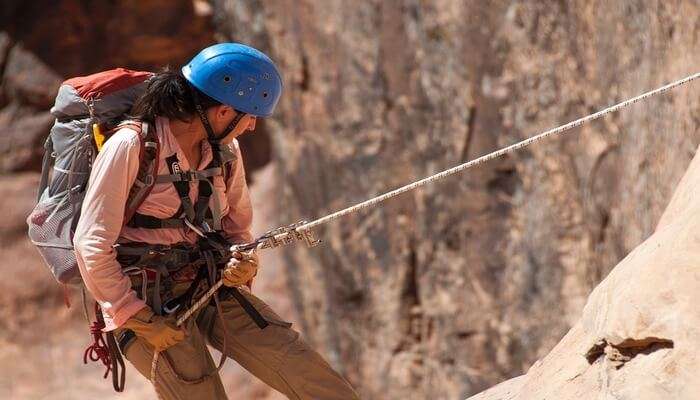
With over 600 routes on limestone crags, Osp has been a constant favorite among novice climbers. All these routes are within 4 kilometers of each other. At Osp, the U-shaped wall mixes long single pitches with multi-pitches. It is in close vicinity to other less-explored climbing destinations in Croatia and Italy. The highlight of this spot is that it easily accessible by road. It is, hands down, the best places for rock climbing in Europe for novices.
Nearest airport: Trieste Airport Difficulty level: Moderate
Suggested Read: Head To San Marino Now: The Fastest Growing Travel Destination In Europe
4. El Chorro, Spain
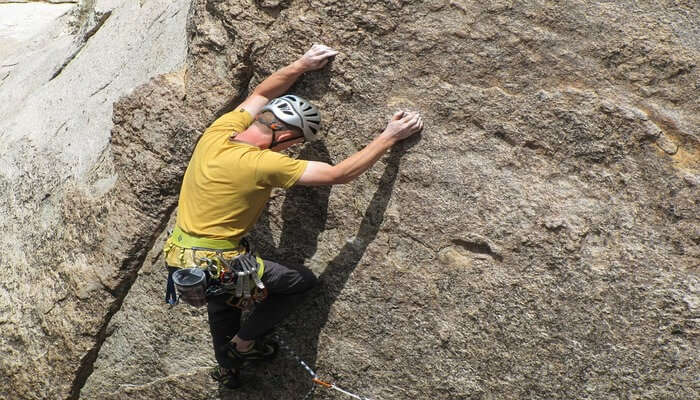
El Chorro is the best limestone climbing areas in Spain. To reach the gorge, you have to hike to the Camino del Rey cliff-edge. It is the most southerly of the destinations for rock climbing in Europe. The walls of the gorge are steep, so make sure to exercise caution while climbing them. There are over 800 multi-pitch and single pitch routes. For your rock climbing trips in Europe , El Chorro is the perfect spot.
Nearest airport: Malaga Airport Difficulty level: Moderate
Suggested Read: 7 Villas In Germany For A Luxurious Holiday In Europe You’ve Always Dreamed Of
5. Mallorca, Spain
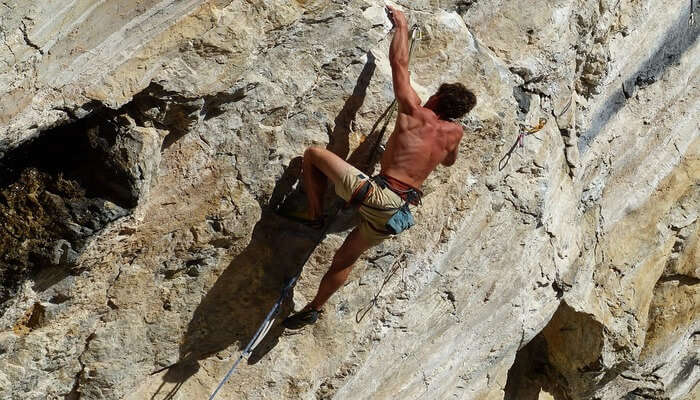
Mallorca is one of the best rock climbing spots in Europe . That comes as a shock to us since the destination offers scenic views, premier deep water soloing, and great options for mid-grade climbing. Some of the best climbing areas include the sea cliffs of Formentor peninsula and the overhangs of La Creveta and Es Fumat.
Nearest airport: Palma de Mallorca Airport Difficulty level: Moderate
Suggested Read: 7 Of The Best Winter Airbnbs In Europe Where You’ll Enjoy A Snug Stay
6. Kalymnos, Greece
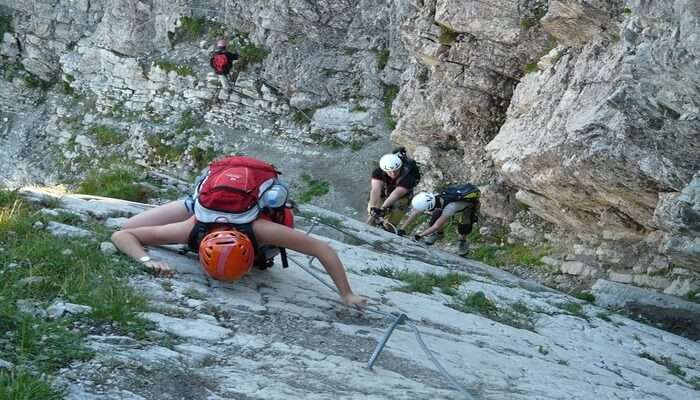
What most climbers don’t know is that rock climbing began in Kalymnos in the 2000s. It is now considered as one of the best places for high-quality climbing in Europe. You can choose from among 3,400 routes and 80 crags in the area. When the sunlight hits the yellow and orange limestone, it makes for a pretty perfect photo op. Try not to trample the wild flowers growing in the region.
Nearest airport: Kos International Airport Difficulty level: High
Suggested Read: Malta Travel Guide: All You Need To Know For A Unique Yet Exotic Vacation In Europe
7. Siurana, Spain

Set in the beautiful Sierra de Prades Mountains, this is a world-class area for rock climbing in Europe. It offers more than 1,750 routes. The routes are a little tricky to navigate, and the climb can prove to be strenuous for inexperienced climbers. Make sure to practice a lot at other places before attempting to climb Siurana.
Nearest airport: Reus Airport Difficulty level: High
8. Kyparissi, Greece
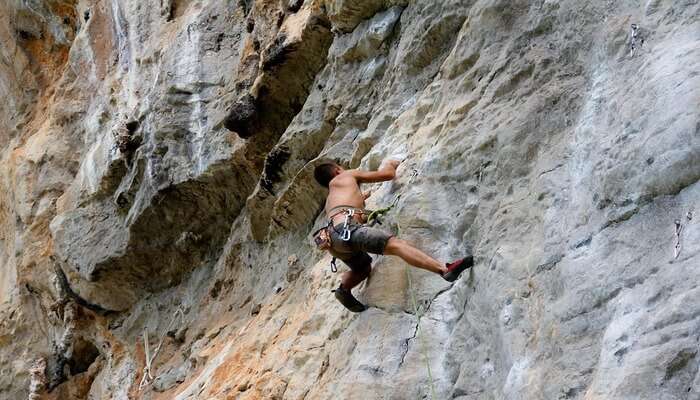
Kyparissi is 5 hours drive from Athens and an hour from Leonidio. It offers more than 1,400 emote routes for climbing. The slopes of Mount Parnon are popular among experienced climbers. Some of the other equally famous spots include Babala, Watermill, and a variety of tough grades at the idyllic remote bay in Vlychada.
Nearest airport: Athens International Airport Difficulty level: High
9. Sicily, Italy
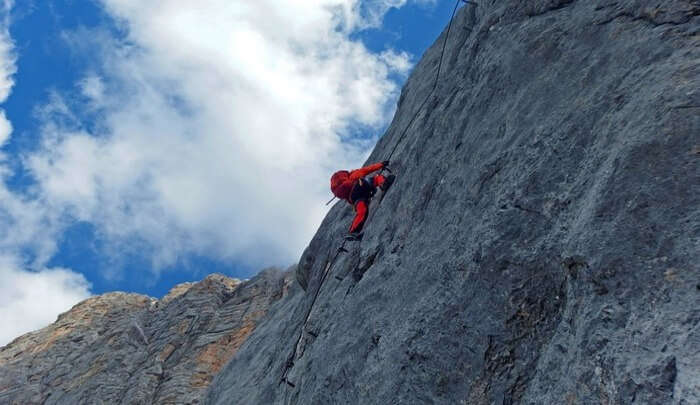
Sicily has over 1,000 multi-pitch and single routes. The routes are suited for all levels, including chimneys, roofs, slabs, and cracks. The beach town of San Vito lo Capo, with its four-kilometer coastal cliff, offers several avenues for adventure. Rock climbing is just one of them. Messina and Siracusa have great sea-facing cliffs where experienced climbers can test their skills.
Nearest airport: Palermo Airport Difficulty level: Low, moderate, and high
Suggested Read: 10 Best Norway Restaurants To Try All Delicacies On Your Next European Vacation!
10. Sella, Spain
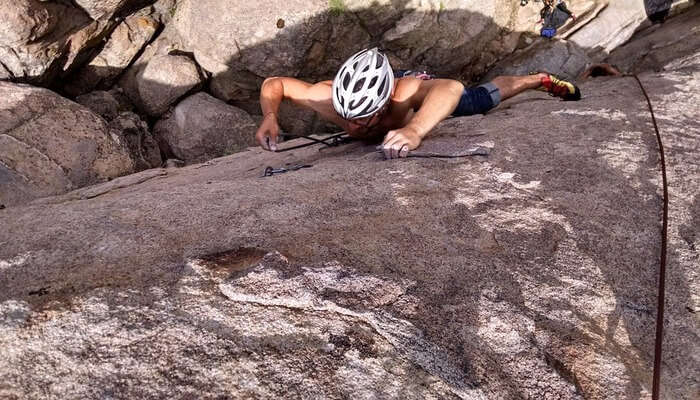
Sella’s steep limestone walls offer options for both challenging and non-challenging climbs. It has over 8 crags and 300 routes. The routes range from easy to challenging multi-routes. Hidden Valley and Divino are great places for newcomers to learn rock climbing. It can get a bit chilly during summers in Sella, so make sure to layer up.
Nearest airport: Alicante Airport Difficulty level: Low, moderate, and high
Further Read: 9 Lakes In Norway Worth Exploring On Your Dream Vacation To Europe
The range of climbing available in these areas is extensive. Experience a different culture at these underrated destinations for rock climbing in Europe where you can climb on routes that aren’t polished and avoid the crowds. The sandstone crags in these regions have well-protected sport routes as well as adventurous trad routes. Book your Europe holiday with TravelTriangle to pursue rock climbing with your loved ones!
People Also Read
Things To Do In Germany Things To Do In France Things To Do In Greece
Looking To Book An International Holiday?
Book memorable holidays on TravelTriangle with 650+ verified travel agents for 65+ domestic and international destinations.

Trip to Sri Lanka at Rs 13,500/-
Plan Your Vacation Today!

Trip to Singapore at Rs 20,499/-
Get Quotes From Local Experts

Mauritius Holiday Starting at Rs 65,000/-
Talk to Our Experts Today

Maldives Honeymoon Trip at Rs 39,800/-
Pay with easy EMI Option

Europe Trip at Rs 89,999/-
All Inclusive Deals

Vacation in Dubai at Rs 27,499/-

Hong Kong Holiday at Rs 24,999/-
Money Safe Guarantee

Thailand Holiday at Rs 7,999/-
Flights Excluded
Neelabja Adkuloo
Places to visit in India
- 30 Best Places To Visit In Bangalore In...
- 64 Best Places To Visit In Kerala For...
- 39 Best Places To Visit In October In...
- 101 Places To Visit In India Before You...
- 20 Places To Visit In Sakleshpur In 2024...
- 35 Exotic Places To Visit In December In...
- 32 Best Places To Visit In January In...
- 20 Best Places To Visit In Meghalaya For...
- 12 Places To Visit In Punjab To Witness...
- Unravel Places To Visit In Uttarakhand For A...
- 26 Best Places To Visit In Jammu For...
- 29 Places To Visit In Monsoon In India...
- Best Places To Visit In August In India...
- 36 Beautiful Places To Visit In Kashmir One...
- 55 Fascinating Places To Visit In Hyderabad In...
- 35 Ultimate Places To Visit In July In...
- 72 Places To Visit In Rajasthan In 2024
- 42 Best Places To Visit In Pondicherry In...
- 33 Spectacular Places To Visit In Mumbai On...
- 43 Places To Visit In West Bengal In...
- 41 Best Places To Visit In June In...
- 35 Best Places To Visit In Mysore In...
- 35 Places To Visit In Coorg For A...
- 54 Best Places To Visit In India In...
- 8 Places To Visit In Jibhi For A...
- 64 Best Tourist Places To Visit In Goa...
- 25 Best Places To Visit In Visakhapatnam In...
- 16 Places To Visit In Lucknow That Showcase...
- 60 Best Places To Visit In Kolkata That...
International Places To Visit
- 35 Best Places To Visit In Japan That...
- 40 Best Places To Visit In Canada In...
- 28 Places To Visit In October In World...
- 28 Stunning Places To Visit In South Korea...
- 25 Places To Visit In Manila In 2024...
- 19 Best Places To Visit In Morocco In...
- 34 Best Places To Visit In Austria In...
- 82 Best Places To Visit In Turkey That...
- 10 Breathtaking Places To Visit In The World...
- 22 Best Places To Visit In Netherlands: The...
- 24 Fabulous Places To Visit In Ireland: The...
- 19 Best Places To Visit In London In...
- Discover 24 Places To Visit In Switzerland In...
- 17 Mystical Places To Visit In Egypt In...
- 15 Places To Visit In United Kingdom That’ll...
- 33 Best Places To Visit In Amsterdam On...
- 19 Best Places To Visit In Kuala Lumpur...
- 42 Best Places To Visit In Bangkok In...
- 11 Popular Places To Visit In Doha For...
- 26 Places To Visit In Germany In 2024...
- 32 Places To Visit In Belgium That Make...
- 15 Places To Visit In USA That Reflect...
- 37 Best Places To Visit In Dubai At...
- 15 Top Places To Visit In Asia To...
- 20 Must-See Places To Visit In Milan In...
- Top 27 Places To Visit In Greece In...
- 31 Places To Visit In Abu Dhabi In...
- 25 Places To Visit In August In The...
- 15 Best Places To Visit In Chicago That...
- 14 Places To Visit In Berlin You Must...
Things To Do
- 40 Things To Do In Pondicherry In 2024...
- 12 Best Things To Do In Matheran In...
- 23 Intoxicating Things To Do In Turkey In...
- Top 14 Interesting Things To Do In Kanyakumari...
- 38 Things To Do In Gokarna To Escape...
- 12 Best Things To Do In Varanasi For...
- 21 Remarkable Things To Do In Krabi In...
- 16 Things To Do On Honeymoon In 2024
- 23 Things To Do In Chennai To Explore...
- 20 Things To Do In Ahmedabad For An...
- 30 Best Things To Do In Wayanad For...
- 37 Amazing Things To Do In Kerala For...
- Top 39 Things To Do In Jaipur
- 19 Things To Do In Mussoorie For A...
- 33 Best Things To Do In Kolkata In...
- Top 25 Things To Do In Kodaikanal For...
- 32 Things To Do In Ooty That Will...
- 15 Things To Do In Srinagar That Will...
- 20 Things To Do In Darjeeling
- 27 Kickass Things To Do In Malaysia
- 25 Best Things To Do In Phuket That...
- 18 Awesome Things To Do In Kasol On...
- 27 Exciting Things To Do In Chikmagalur
- 9 Things To Do In Mathura For An...
- 23 Things To Do In Lonavala For A...
- 10 Best Things To Do In Lakshadweep For...
- 30 Joyful Things To Do In Bhutan
- 38 Exhilarating Things To Do In Udaipur In...
- 18 Best Things To Do In Chandigarh
- 29 Amazing Things To Do In Shimla
- 30 Things To Do In Dehradun In 2024
- 7 Incredible Things To Do In Vrindavan For...
Recent Posts

Things To Do In Camperdown For An Exciting Holiday In 2024

Explore Top Offbeat Things To Do In Toowoomba In 2024

Explore Top Things To Do In Mackay For The Perfect Tropical Getaway In 2024

Things To Do In Wollongong For An Exciting Trip To Australia In 2024
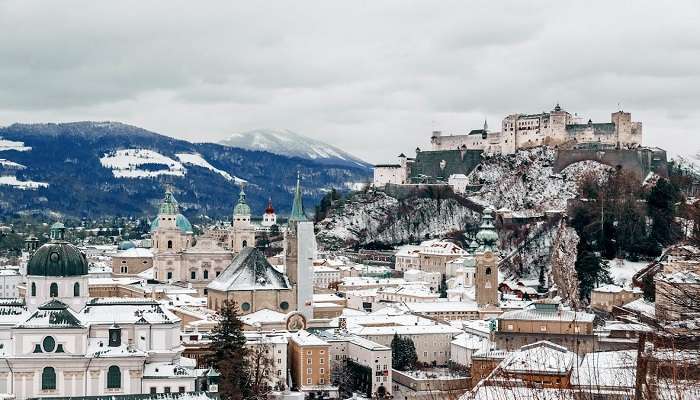
2024 की सर्दियों में ऑस्ट्रिया: सौंदर्य और संगीत की भूमि में इन 10 स्थानों पर जाएँ
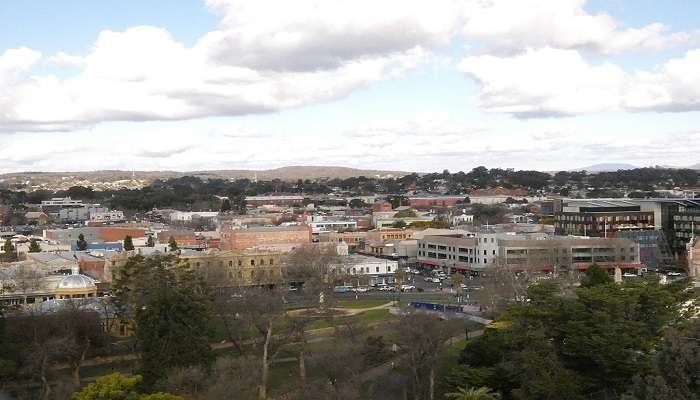
A Comprehensive Guide To Best Things To Do In Bendigo In 2024
Trending Blogs

20 Mysterious Places In India To Visit In 2024 More Bizarre Than The Bermuda Triangle

10 Scariest Roads In India That Are A Driver’s Nightmare
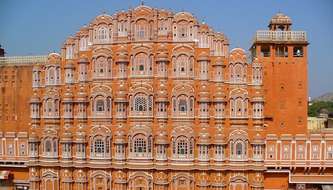
101 Places To Visit In India Before You Turn 30 in 2024

35 Exotic Places To Visit In December In India 2024 To Enjoy A Surreal Vacation

64 Top Honeymoon Destinations In India In 2024

95 Best Honeymoon Destinations In The World In 2023 For A Romantic Escape!
Best Places To Visit In India By Month
Best places to visit outside india by month.
- TravelTriangle
- International
- Europe »
- Tour Packages
- Honeymoon Packages
- Family Packages
- Budget Tour Packages
- Luxury Tour Packages
- Adventure Tour Packages
- Group Tour Packages
- Maldives Tour Packages
- Bali Tour Packages
- Dubai Tour Packages
- Singapore Tour Packages
- Thailand Tour Packages
- Europe Tour Packages
- Sri Lanka Tour Packages
- Tour Packages From Delhi
- Tour Packages From Mumbai
- Tour Packages From Bangalore
- Tour Packages From Chennai
- Tour Packages From Kolkata
- Tour Packages From Hyderabad
- Tour Packages From Ahmedabad
- Thailand Tourism
- Bali Tourism
- Singapore Tourism
- Maldives Tourism
- Mauritius Tourism
- Dubai Tourism
- Europe Tourism
- Hotels in Thailand
- Hotels in Maldives
- Hotels in Mauritius
- Hotels in Bali
- Hotels in Dubai
- Hotels in Singapore
- Hotels in Sri Lanka

How It Works
The top 10 Rock Climbing Destinations in Europe
A trip to Europe is incomplete without spending at least a few days rock climbing - and that’s a fact.
You may have planned your holiday with the intention of visiting fascinating historical cities, enjoying some mouth-watering food, or just lounging on the beach and making the most of the slower pace of life. But once you notice the incredible rock - it's everywhere - you’ll regret not bringing your shoes.
For some, climbing in Europe brings to mind images of orange limestone walls dripping with tufas. For others it’s the crimps and pockets of Tarragona, and others yet it’s sketchy British trad. Europe is home to a huge number and variety of world class crags, and depending on how adventurous you’re feeling, you could find yourself pulling hard on seaside cliffs in Portugal, or highlining over a lush green canyon in Bosnia and Herzegovina.
If you’re new to the sport or simply want the advice of a local guide, we have a number of awesome trips to choose from.
Unfortunately, as our sport continues to grow, some of the more famous European climbing areas are suffering from overcrowding and a degree of environmental degradation. For this reason we’ve chosen to showcase some of the continent’s best lesser-known (yet equally world class) climbing destinations.

Giulia Bernardini climbing in Stockholm, San Vito Lo Capo, Sicily © Massimo Cappuccio
1. Sicily, Italy
As we mentioned in our guide to climbing in Sicily , this Mediterranean island is known for 3 things: the crystal clear sea, the mind-blowing food, and the laid-back vibe. But in recent years, Sicily has started to gain a reputation for something quite different: rock climbing!
If unpolished limestone, peaceful crags, sea-side sport climbing, and a warm and welcoming climbing community get you psyched, then Sicily is the place for you.
San Vito Lo Capo , located at the north-western tip of the island, is by far the most famous climbing area in Sicily. Kilometres of cliffs overlook the sea, offering hundreds of sport routes from introductory slabs to true pump-fests. We recommend starting at the Salinella cliff , where you’ll find countless crags in a peaceful seaside setting, but there’s plenty more to choose from, including some deep water solo!
However, climbing in Sicily is not limited to San Vito Lo Capo. The Bosco Scorace (Scorace Forest), located about 30 minutes away, is a true hidden gem for boulderers. You’ll find over 200 sandstone blocs with a Fontainebleau-like feel and awesome climber’s B&B nearby , whose owners developed the whole area themselves. Impeccable footwork and a good head for top-outs are a must. Get ready for some schooling in power and technique!
You'll also find some excellent climbing in Eastern Sicily. Start at the crags near the historic town of Taormina , where you can choose between Sicilian limestone or volcanic basalt with a view of Mount Etna. There are some incredible routes in the peaceful countryside near Canicattì Bagni , on the outskirts of Syracuse. You can choose between vertical and overhanging routes which navigate through caves and holes.

Luca Parise climbing in Val Maone in the Apennines © Roberto Valentini
2. The Apennines, Italy
The Apennines are a 1,350km-long mountain range, often referred to as ‘the backbone of the Italian Peninsula’. Known for their wild landscapes, vibrant flora and fauna, quaint ancient villages, and pilgrim’s trails, the Apennines are also home to some pretty incredible climbing spots.
Bismantova , located in the province of Emilia, is one of the Apennines’ more well-known crags. A forest-topped island of rock rises suddenly from the surrounding hills, offering over 250 sport and multi-pitch routes, up to 8b, with a unique and technical style. Get ready for some spectacular climbing with soul-stirring views from the anchors.
Heading south to Tuscany, in the hills around the village of Camaiore you’ll find over 1000 routes on pristine limestone rock. The climbing here tends to be more suitable for intermediate to advanced climbers, with bolted single and multi-pitch routes 6a and up, offering views of the Apuan Alps on the one side and Mediterranean sea on the other.
The nearby region of Marche offers even more incredible sport climbing. Between Gola del Furlo , Gola della Rossa and the Frasassi Natural Park , there’s thousands of routes of all styles and levels, including the option to climb in a cave right next to a temple. Pretty incredible, right?
Finally, the Gran Sasso National Park is an area best known for its modern and classical multi-pitches. However, if you’re looking for something a little different, it’s the boulders around Monte Aquila , Vadi di Sole , Vallone delle Cornacchie and Valle del Month that you should visit. Think pockets, crimps and compact limestone, with a backdrop of stupendously scenic peaks.
If you’d like to learn more, check out our blog post on climbing in the Appennines !

Erik Baquero climbing Como marca la ley (6c+) in Arico lower sector © Mikko Vänskä
3. Tenerife, Spain
Tenerife is a fantastic year-round climbing destination, offering stable weather, 400km of coastline, excellent food, and awesome crags - all within a short drive from one another. The island’s characteristic volcanic basalt makes for some unique, varied 3D climbing. Tenerife is a great place to head if you’re looking to combine climbing with other outdoor sports: you can hike, mountain bike, surf, windsurf, sail - the list goes on…
Many of the best crags on Tenerife are clustered around the village of Arico , in the Southeast of the island. This is where you’ll find Climbing House Tenerife , a B&B designed with climbers and other outdoorsy people in mind.
The Arico crag itself is well worth a visit. You’ll find over 250 routes here, between IV+ and 8c+, characterised by powerful, bouldery moves. Tamadaya, nearby, is a great spot for beginners as it offers over 50 well-bolted routes up to 6b+, and a straightforward approach.
If you’re looking to get a little more off-the-beaten-track, head to Planeta Zarza or Guaria . Planeta Zarza is a small crag offering some excellent routes in 6th and 7th grades, covering a variety of styles (cracks, chimneys, face climbing, etc.). Guaria, located in the ‘La Montana de Tejina’ Protected Natural Area is home to some longer sport climbs and multi-pitch routes with incredible sea views. You’ll need to obtain prior permission to climb here, but this can easily be done online.
You can find out more about any of these areas in our blog post on climbing in Tenerife.

Javier Morales climbing in Cogollos, Granada © David Munilla
4. Granada, Spain
Granada is known more as a tourist destination than a climber's paradise, but on the outskirts of this historic city you’ll find some incredible crags known almost exclusively to locals. Thousands of routes - mostly limestone sport climbing - are concentrated within a small area, offering quality climbing on crimps, technical faces and slight overhangs. If it’s alpine-style multi-pitches you crave, then the nearby Sierra-Nevada range offers the perfect playground.
Los Vados , near the town of Motril, is one of the most extensive climbing areas in the Granada region, with over 500 sport and multi-pitch routes from 4a to 8b+ just a short stroll from the beach. While you’ll find plenty to keep you occupied as an intermediate or advanced climber, there are 3 sectors designed specifically for beginners, offering high-quality routes up to 6b between 30 and 40m long.
If you’re looking for something a bit closer to the city, Los Cahorros or Cogollos are good options. Los Cohorros is one of the oldest crags in Spain, home to 350 sport climbs in a scenic Dolomite canyon full of waterfalls and hanging bridges. The routes may feel a bit sandbagged, but that’s only because they still use a local grading system which is a little different from the French one.
For those of you climbing in the 7th and 8th grades, Cogollos is well worth a trip: think perfect orange limestone with crimps, pockets and tufas, and lots of variety between sectors.
Finally, to the north of Granada, in the outskirts of the city of Jaen, you’ll find Reguchillo , one of the best little-known climbing spots in Spain. With over 400 limestone routes from 4a to 8c and south-facing walls it’s a great winter destination - but unclimbable once the temperature gets above 15 Celsius!

Carlos Simes climbing in Sagres, Portugal © Ricardo Alves
5. Lisbon, Portugal
Portugal’s potential as a climbing destination is often overshadowed by its proximity to Spain, but this small country is home to some excellent crags! About one-third of third of the country’s existing crags are located in the area around Lisbon, where you’ll find anything from coastal sport climbing to adventurous trad, and even world-class bouldering in a mystical forest.
Of course, a trip to Portugal isn’t complete without some surfing, relaxing on the beach, enjoying delicious seafood and wine, and visiting the cultural metropolis of Lisbon.
Boulderers must visit Sintra , an idyllic town and UNESCO world heritage site situated on the edge of the Parque Natural de Sintra-Cascais. Amidst the pine trees, you’ll find medieval castles and palaces with lush gardens, and awesome granite blocs offering over 1,200 problems between 4 and 8b.
The Arrabida Natural Park is the place to head for sport climbing. Here you’ll find Fenda , a crag overlooking the Portinho da Arrabida beach which is home to many iconic climbs (including some of the first 8s in Portugal). While the climbs in the 7s are particularly world-class, you can choose from over 100 sport routes between 4 and 8b, characterised by their slightly overhanging, pumpy style.
For some sea-cliff climbing with an adventurous feel, head to Meio-Mango , on the edge of Cabo Espichel. You’ll find over 100 climbs between 5 and 8c+ here, on weathered limestone with a unique style: think creative, athletic and dynamic moves. The approach - which involves some zipline crossings - just adds to the adventure.
We’ve written an extensive guide to r ock climbing in the Lisbon region and run guided trips in the area.

Ondrej Tuma climbing in the Czech Paradise (Cesky Raj) © Jan Zahula
6. Cesky Raj, Czech Republic
Sport climbing has featured heavily so far, but our next destination offers something a little different…
Cesky Raj , sometimes known as the Bohemian Paradise, is a climbing area just 40 minutes from Prague known for its traditional purist style. When climbers first set out to conquer the area’s sandstone towers, modern trad gear did yet not exist, so they used knotted slings and prussics instead. While some of the routes now have some bolts (these are NOT sport routes!), the style is much the same: no metal gear is allowed in order to preserve the rock.
However, once you master the technique the possibilities are endless. Cesky Raj is home to 30 sectors offering over 18,000 routes, within just 40km of one another! Chimneys, cracks, friction climbing, edges and face climbs - this area has it all. In fact, you’ll be surprised by just how much the sandstone can change in such a short distance.
Climbing is not the only attraction of the Bohemian Paradise: the whole place has a remote, wild and adventurous feel about it. Imagine valleys covered in sweeping pine forests, full of old castles and oddly shaped sandstone towers. There’s wonderful hikes for rest days, authentic pubs with delicious local beers, and a warm and welcoming climbing community to drink them with.

As we’re on the topic of trad climbing, let’s talk about the United Kingdom. While it’s a myth that this country has no worthwhile sport climbing, if you’re an exclusively sun seeking sport climber looking for beaches and tufas, then I’d give it a miss. However, if you enjoy trad and bouldering, are patient enough to wait out a weather window, like rugged landscapes and a friendly crag atmosphere, then you're in the right place.
The Lake District in Northern England is well worth a visit, if not for the beauty of the landscapes alone. Think rugged fells that bloom purple in spring and turn crimson in autumn, crowned with lonely crags and interspersed with quintessentially English villages. Yes, the Lakes are not exactly off-the-beaten-track and, yes, British trad climbing is an acquired taste - but if you want the authentic experience, this is it.
In addition to the trad, there’s plenty of bouldering. We particularly recommend St Bee’s Head with its honeycombed sandstone blocs that make for a really unique day out.
The Snowdonia National Park in Wales is another classic British destination, where you’ll find everything from skin-searing boulders, to sketchy trad and even sport climbing! If you’re looking for some coastal trad, Pembrokeshire in Wales or the s outhwest coast of England are the best places to head. We’ve written a whole post about these destinations which offers more detailed information.

Heather Weidner climbing in the Prohodna Cave, Bulgaria © Ruslan Vakrilov
8. Bulgaria
Bulgaria may not be the first European rock climbing destination to spring to mind, but it’s one that should definitely be on your list! Climbing in Bulgaria means unpolished crags, undulating mountain ranges, wild and unspoiled landscapes, and a chance to experience a rich and varied culture. From sport climbing in etherial caves to multi-pitch mountain routes, it’s a true one-of-a-kind experience.
The Prohodna Cave in Karlukovo is possibly one of the most unique climbing areas in the world. The cave is famous for its two symmetrical skylights - known as God’s Eyes - which, when viewed from the right angle, take on the appearance of a face looking down from above. You’ll find 100+ excellent single-pitch sport routes within the cave itself, characterised by their technical and powerful nature.
Vrasta , located in the Vrasta-Balkan National Park (about an hour from Karlukovo), is a grey-streaked limestone gorge home to 600 sport and alpine-style trad routes. The 350m tall Central Wall offers some of the longest routes in the country, but there’s also plenty of sport climbing in nearby crags, with routes up to 8c.
If you’re looking for a change of scenery, the nearby town of Lakatnik is home to 300 bolted routes, on limestone that has been eroded into some pretty spectacular shapes.
If visiting in the warmer months, you may want to head to Tyulenovo on the Black Sea coast for some quality deep water soloing. For some good alpine-style routes, head to the Rila Mountains , a stunning national park known for its numerous lakes and diverse wildlife. You can find out more in our guide to rock climbing in Bulgaria .

Klemen Becan bolting a new project and Klemen Vodlan climbing in Pecka © Anja Becan
9. Bosnia and Herzegovina
Bosnia and Herzegovina still lies pretty far off the tourist track by European standards, but it has the potential to become one of the continent’s best climbing destinations. Although the development of climbing areas only really kicked off in the 1990s, thanks to the efforts of locals the country is home to some excellent, well-bolted crags, and even hosts the international Drill & Chill festival. Get ready for some of the most scenic countryside you’ve ever seen, legendary hospitality, and rock so unpolished that the locals seek out polished routes ‘for fun’.
We’ve got a whole blog post dedicated to rock climbing in Bosnia , but there’s a couple of spots worth mentioning again. Kanjon Tijesno is a crag in the outskirts of Banja Luka, which boasts the highest concentration of hard routes in the country. The climbing is on limestone (which even Adam Ondra has said is of good quality), full of crimps, tufas and pockets. The area is also great for highlining, and if you’re lucky you may spot some people practicing this art.
Blagaj is an incredible crag in the Mostar region, where you’ll find over 180 single and multi-pitch routes mostly around the 6th grade. The crag sits on the edge of a small Ottoman village and near some interesting historical sites.
The remote mountain crags of Klekovaca and Preodac are worth a visit if you're looking for some peace and solitude. Klekovaca is home to 40 sport routes on perfect limestone walls, surrounded by nothing but dense forest for miles. Preodac offers some quality climbing with breath-taking views, perfect for those seeking out routes in the 6th and 7th grades.

Pietro Radasso in Morgia Quadra, Molise © Francesco Guerra
10. Southern Italy
Another Italian rock climbing destination?! We hear you. However, in our eyes southern Italy is the perfect place for a winter climbing trip. Delicious food, beautiful coastlines, quiet beaches and historic towns are just some of the region’s attractions. Add to this with a good number of quality crags and huge amounts of virgin rock awaiting development, and it’s definitely an up-and-coming climbing destination worth visiting.
You’ll find a lot of excellent climbing just a couple hours' drive from Naples. To the north of the city, you have Sperlonga , where 18km of vertical coastline awaits boasting 600+ single and multi-pitch routes. But if you’re looking for something a little more off-the-beaten track, head south to the incredible Amalfi Coast where you’ll find Positano . This area is home to vertical towns and towering cliffs overlooking the crystal clear sea - which remain completely uncrowded.
During the warmer months the small region of Molise is well worth a visit. This is where you’ll find Frosolone , a true climber’s playground, with 60 giant blocs of compact limestone offering over 600 routes. Rural landscapes with a timeless beauty just add to the vibe.
Finally, boulderers should head to Pietra del Toro , near Campomaggiore, in the region of Basilicata. There’s more than enough to keep you occupied for a few weeks: 450 blocs up to 7m high, with technical climbing on compact sandstone.
This is only scratching the surface of what the region has to offer. If you’d like to find out more about climbing in Southern Italy , then check out our guide.

These may be our 10 favourite climbing destinations in Europe, but there’s so much more to discover on this diverse continent. From the seaside crags of Montenegro to mountain bouldering in Macedonia, you can find out about more incredible areas in The Climbing Travel Guide - available to buy from our shop.
We also run trips to many of the European climbing destinations listed above. It’s the perfect opportunity to get to know the area with the help of a local guide, meet other likeminded climbers and develop your climbing skills.
* * *
Cover photo © Jan Zahula
You may also like
The Best Hiking Adventures In Greece: Samaria Gorge and Menalon Trail - A Guide
Your Guide for Hiking Mount Olympus: Mytikas Peak and Other Best Routes
Rock Climbing in Greece: A Guide for Climbing in Kalymnos, Leonidio, Meteora and Crete
The Ultimate Sardinia’s Outdoor Guide: Hiking and Climbing in the Mediterranean Sea
A Complete Guide to Mont Blanc For Any Outdoor Sports Lover: Hiking, Climbing, and Ski-Touring in the Heart of the Alps
EMBRACE PEAK PERFORMANCE
Get the lowdown on the latest footwear releases, expert training advice, unique giveaways and motivational stories from athletes around the world.
Our email newsletter will bring you inspiring news on your favourite sports and activities, direct to your inbox.
- Road Cycling
- Racket Sports
- Water Sports
- Skateboarding
- Mountain Biking
By providing your email address you are agreeing to receive promotions, offers and newsletters from Michelin Lifestyle Limited via email. Your email address will be used to manage your marketing preferences and subscriptions, measure the performance of our campaigns, and analyse your interactions with our communications. You can withdraw your consent at any time by clicking the unsubscribe link in any marketing email. For information on how we process your personal information, see our privacy policy .
Where to go rock climbing and bouldering in Europe
Climbing takes you to the edge of it all.
Once you’ve conquered one route, you can’t help but look for the next. Once you’ve been to the edge and back again, the urge to do it again becomes even stronger.
Here’s eight European climbing destinations to consider for your next adventure…
TRE CIME DI LAVAREDO, ITALY
Three giants, side-by-side. Tre Cime di Lavaredo is the name given to the Italian alpine mountain trio: Cima Ovest, Cima Grande, Cima Piccola.
Climbing in the Dolomites is a must for any climber. And these immense limestone towers are streaked with an extensive network of routes that are up there with the most unique in the world.
Tre Crime has five recognised peaks, and routes include two of the toughest alpine climbs anywhere —Panaroma (14b) and Bellavista (14b). Both were first ascended and free climbed by Alexander Huber.
Other popular routes include Yellow Edge (Piccola), Hasse-Brandler (Grande) and Bellavista (Ovest).
Find out more
Paklenica national park, croatia.
Paklenica is one of the climbing community’s best kept secrets. Shaped by countless rock faces, caves, crags and gorges, the National Park offers a huge selection of routes (590 in total), many of which look straight onto the dramatic Adriatic Sea.
The true classic among the Paklenica climbs is the 350m vertical ascent up the north and northwest faces of Anica Kuk. The three popular multi-pitch routes Velebitaski, Klin and Mosoraski may be steep and unforgiving, but the nature of the beast is what makes each one so memorable.
Beyond the unmissable Anica Kuk, smaller climbs line the karst river canyon, which stands out for the remarkable contrast between their grey rock chimneys and the smattering of greenery.
STANAGE EDGE, ENGLAND
No climbing rundown would be complete without a trip to the Peak District.
This renowned destination is littered with crags, boulders and vertical rock faces for climbers to grapple with. It’s also home to what is regularly lauded as Britain’s most popular crag , Stanage Edge.
Now that’s quite a claim—especially when you think about all the other hiking spots in the UK . But it’s well deserved. This collection of quality gritstone climbs on the border between Derbyshire and South Yorkshire is irreplaceable.
- The good, the bad and the ugly of rock climbing
- The film every adventure junkie needs to watch
- Why do people climb?
AGIOFARAGO, CRETE
Sun, sea, and superb climbing. Situated on the southernmost side of the Crete, Agiofarago is one of many famous climbing regions on the island.
Known for its sharp and jagged rock formations, the area is characterised by some of the toughest climbs you can find in Europe. With both single and multi-pitch routes hitting 8b+ in difficulty, Agiofarago offers up a real treat for climbers on the hunt for challenge.
Be sure to hit the beach too. This little nook of Agiofarago doesn’t only boast white sands and clear seas—it’s also a great spot for climbers to get to grips with the best of Crete.
SELLA, SPAIN
Costa Blanca’s prominent climbing hub throws something new at you every time you visit. Whether it’s a brand new wall or buttress to climb or a summit you’d never noticed before, there’s always something different to explore.
Sella’s 425 climbing routes vary considerably in both grade and terrain. During peak season some routes become almost too busy, while quieter sections such as the Hidden Valley and The Divino were made for technical climbers with an appetite for danger.
Arguably the best destination on the list, Sella is the complete climber’s getaway. And with so much to choose from you won’t want to come home anytime soon.
VÄSTERVIK, SWEDEN
The Swedish city of Västervik is surrounded by miles of archipelago, dense pine forests and all-important boulders and granite cliffs. The region’s reputation as a European go-to spot for bouldering has grown rapidly over the last decade and shows no sign of slowing.
Bouldering is the ultimate pursuit for those who relish the pure, social and problem solving sides of climbing, and Västervik is a prime location. Top-rated local crags include Vo Västervik, Äskestock, Lysingsbadet, Vargblocken and Rövargrottan Loftahammar.
As Scandinavian climbing adventures go, this is right up there. And with a brand new climbing centre opening its doors just a few years ago, there’s easy access to gear and lessons too.
PALATINATE, GERMANY
We’ve explored the Palatinate or Pfalz region in eastern Germany before.
With large rolling hills coated by one of Europe’s biggest stretches of forest, it’s little wonder the region is a bucket list destination for hikers from all over the globe.
However, what you may not know is that Palatinate and climbing go way back. The sport has been part of the region’s tradition for over 100 years.
Thousands of climbers every year visit Germany in search of the climbing network, made up of over 200 rocks faces. Remarkable in appearance, the boulders and sandstone high-rises so synonymous with Palatinate make up incredible routes including Mühlenberg , Trifels and Haart .
ISKAR GORGE, BULGARIA
Bulgaria probably isn’t the first country that springs to mind when it comes to climbing.
Make no mistake though, there’s bags of reasons why it should be.
Host to some of the lesser-known climbing gems in Europe, the country’s stunning backdrops are slowly but surely putting it on the global map—and the Iskar Gorge is up there with the best.
The 70km gorge, which passes through the Balkan Mountains is known for its caves and epic canyon walls made from both lime and sandstone. The Prohodna karst cave is one that every climber should rise to.
Two natural entrances light the inside, making routes far more accessible.
ONWARDS AND UPWARDS
The raw and wonderful nature of climbing means there’ll always be another rock face to defeat. And that’ll change you. It’ll take you to places most people don’t even know exist, it’ll drive you to chase new challenges. It’ll help you see the world.
Have you found your next fix yet?
Join our mailing list for the latest giveaways, footwear releases and training tips.
Rock Climbing in Europe: Top Outdoor Adventures Awaiting You
( 1261 reviews )
Discover the varied landscapes and diverse scenery on the world’s second smallest continent!
Compare and book a certified guide for your trip on Explore-Share.com: 1500+ guides, 70+ countries and more than 8000 different programs to choose from. Take a pick from our selection of Rock Climbing trips in Europe. The mountains are calling!
Top rock climbing trips | Europe

1-day private rock climbing around Montserrat, Spain

Rock climbing day in the Sintra-Cascais Natural Park, close to Lisbon

1+ day rock climbing in Athens, Greece

Need Assistance?
Our knowledgeable team is here to assist you at any moment throughout your adventure.

Rock climbing in El Chorro in Spain, near Málaga
Intermediate

Guided multi-pitch climbing in the Dolomites

Multi-pitch climbing in Montserrat, Barcelona

1+ day Bouldering in Fontainebleau, France

Mallorca Guided Rock Climbing: Sports, Multipitch, DWS

Barcelona, Montserrat, Guided Rock Climbing

Fontainebleau bouldering half-day guided experience

1+ day Rock climbing in Cinque Torri, near Cortina (Dolomites)

Bouldering in the Sintra-Cascais Natural Park, near Lisbon (Half-day)

Half-day Sport Climbing Trip in Southern France (Calanques de Marseille, Sainte Baume, Garlaban)

Half-Day Bouldering in Fontainebleau, near Paris

Climbing around Portovenere, 5 Terre

Rock climbing in Nafplio, Greece

Deep Water Soloing in Mallorca (1+ day trip)

Rock climbing day in La Pedriza, near Madrid

Multi-pitch rock climbing in Calanques National Park, southern France
FAQs : Rock Climbing in Europe
What should I know about Rock Climbing Europe?
The Alps are the most notable climbing destination, with Switzerland, Italy, France and Austria serving as particularly popular spots. However, there are plenty of other places to climb as well. Nearly every European country offers plenty of great rock climbing options for participants of every level and trips of every duration.
Once you’ve completed a long day on the rocks, there are plenty of other things to discover in Europe as well, from the diverse cultures and food to numerous other excellent outdoor activities.
Why should I choose Europe for my Rock Climbing adventure?
Regardless of where you head on the European continent, you are sure to be met by absolutely gorgeous scenery. From Portugal’s stunning Atlantic coastline to the verdant forests and pristine lakes of Romani;a Carpathian Mountains, rock climbing gets you out into the heart of nature and gives you a slightly different perspective of some incredible landscapes.
From the pristine sandstone of the Dolomites to the immaculate granite on the Mont Blanc massif, there is plenty of high-quality climbing to de done all over Europe. Whether you are looking for a simple day of single pitch sport climbs in the Alps or a longer multi-pitch trad ascent of the iconic Stetind, Norway’s national mountain, there is plenty of incredible climbing experience.
You can’t spend your whole trip out on the rocks, so once you’ve unstrapped the harness and taken off your helmet, explore some of Europe’s iconic cities. Many of the continent’s premier climbing destinations are also nearby incredible urban areas. For example, Athens, Barcelona and Munich are all conveniently situated right near some of the best climbing spots in all of Europe.
What can I expect from the weather during my Rock Climbing trip in Europe?
During the summer, Europe is generally warm and humid. The whole continent tends to experience temperatures in the mid-20s and above. Rain is quite frequent in the north, but less so in the south.
When is the best time to travel to Europe for Rock Climbing?
May to September. In the Mediterranean basin, many guides offer trips year-round.
What people are saying about Rock Climbing | Europe
This trip was the highlight of my week. Toti was very helpful and knowledgeable, and really made the day great.
Climbing with Marc at Montserrat was awesome! He contacted us before the trip to get an idea of what our experience was, and what we hoped to get out of the trip, and he used the info to help design the perfect climbing day for us! We felt completely safe climbing under his guidance. Very nice guy, we had a great time with him. He was also kind enough to capture action photos of us during the climb. Also, the location is undeniably gorgeous. It made for an unforgettable and truly life-changing experience! I absolutely would recommend Marc, to climbers of any level!!
Marc was amazing, very knowledgeable and friendly. Had a great first experience doing multi pitch. Highly recommended!
I chose the intermediate rock climbing trip with Danijela at Paklenica National Park. Without a doubt, it was the highlight of my entire trip throughout Croatia. I strongly recommend Danijela (and her assistant Ferdo) to anyone looking for a guided rock climbing experience. First, the instructions are clear on where and when to meet the guides. The trip started at 7am to beat the heat and the crowds. We stayed in nearby Zadar, which is about an hour away. Buses don't arrive that early, so . Uber is your cheapest option (unless you rent a car yourself). We had some trouble getting there, but Danijela was flexible with the time, which was sincerely appreciated. Second, the actual climbing is incredible. Danijela assessed my climbing ability and tailor-made a climbing experience suited to my abilities. I was challenged, which was exactly what I wanted. My only regret is that I did not book a longer trip, or perhaps a couple of days with the guides. They are incredibly experienced, and they gave me helpful climbing tips that I never learned climbing at my local crag. Without a doubt, they made me a better climber in the short time I was with them. Also, these guides are so knowledgeable and experienced that I never once felt unsafe. I always felt that no matter the route, they had me on belay, and my life was secure. The gear was also top quality. I have never had such a feeling of trust while climbing, and I just met them! Third, the guides are simply amazing people. We had great conversations the entire time, and they were friendly, funny, and caring. After the experience was over, they took us to a famous restaurant near the park. We were in a hurry to catch a bus (which they showed us exactly where the bus station was and when the bus would arrive), and they got the restaurant staff to serve us fast to make sure we would not miss our bus. Look no further!! BOOK THIS TRIP NOW! I cannot wait for the next opportunity I have to be in Croatia, as I already cannot wait to book another trip with them.
Our guide Adria was easy-going & fabulous! He secured a funicular discount & completely transformed the climbing trip to accommodate us as first time climbers. Even letting us progress to a FINAL VERTICAL CLIMB! An absolute perfect day at Montserrat! The views were jaw-dropping! Happy family of 4, Thankyou!
Find more rock climbing trips
Join our newsletter.
Stay up-to-date on the best adventures.


Siurana – One of Europe´s best sport climbing destination
Only a 2 hours drive away from Barcelona, Siurana is a paradise for sport climbers and one of the top destination crags in the world.
The limestone cliffs surrounding the idyllic hilltop village of Siurana are of excellent quality and known for their thin, technical lines with incut pockets and sharp edges.
Siurana probably is Europe’s most known sport climbing destination with over 1.500 routes suitable for all levels. The topos for Siurana and surrounding areas (like Arbolí) can be found in the Climbaround App ( http://climbaround.com/ )
Sector Grau dels Masets Esquerra
Very recommendable sector. 15 mimutes walk from the parking (see map below). Supernice views and there’s a spectacular slack line on the way (Grau dels Masets Camí). We climbed: Arnau (6a+): Nice route to warm up, not slippery like some other routes in the sector (e.g. Super fisura (5+) and Super esperó (6b) Es algo (7a): I found it to be a quite hard 7a, very nice to climb though with one especially hard move halfway through. Arbre (6c+): Very recommendable, extremely hard start, a hold might have broken off at the beginning but after that the route is supernice. Piu piu (6b): Next to Arbre, also recommendable.
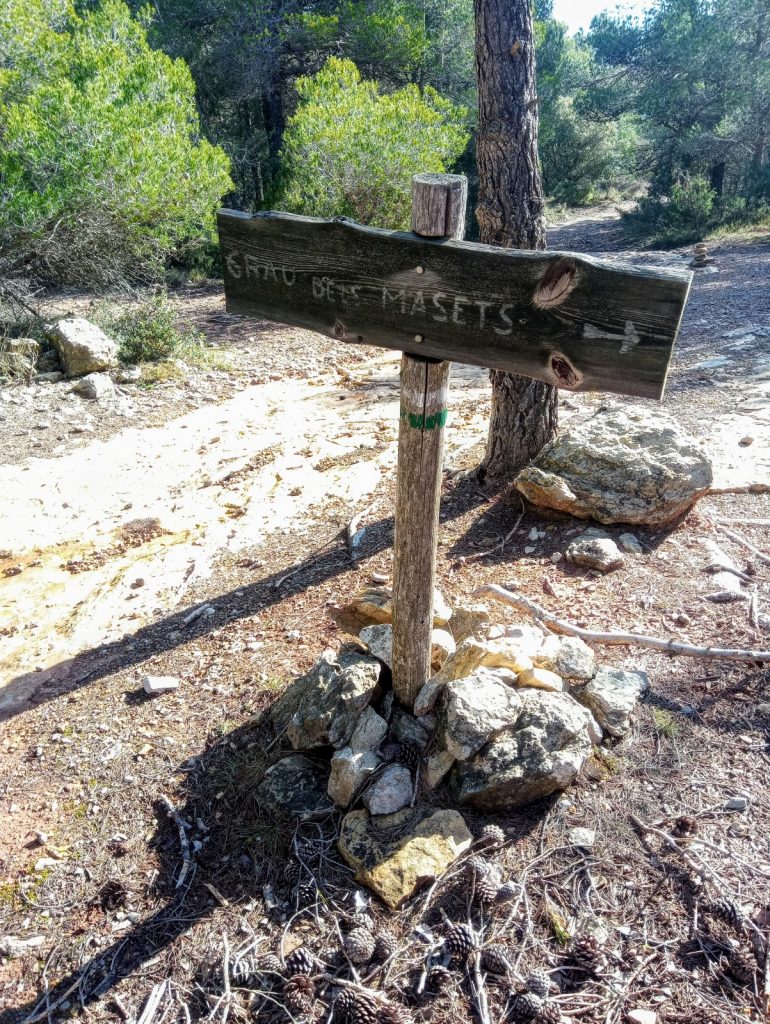
Sector L’herbolari
We climbed: Maria Lluisa (6a+): Nice route to warm up. Arrebato (6b): Ok climb, I guess. Didn’t really stick in my mind. Money for nothing (7a): Consistently hard 7a, at least to me. Not something I want to project or repeat. El retorn de Francolins L1 (6c+): We finished with this route. We wanted to do the second pitch as well but did not continue after L1 because there were only 3 bolts on the 20 meter route and we didn’t bring cams. The route was nice to climb, not a 6c+ though, more like a 6a. It seems not many people had climbed the route before. There’s grass on the rock and some parts are loose and sandy.
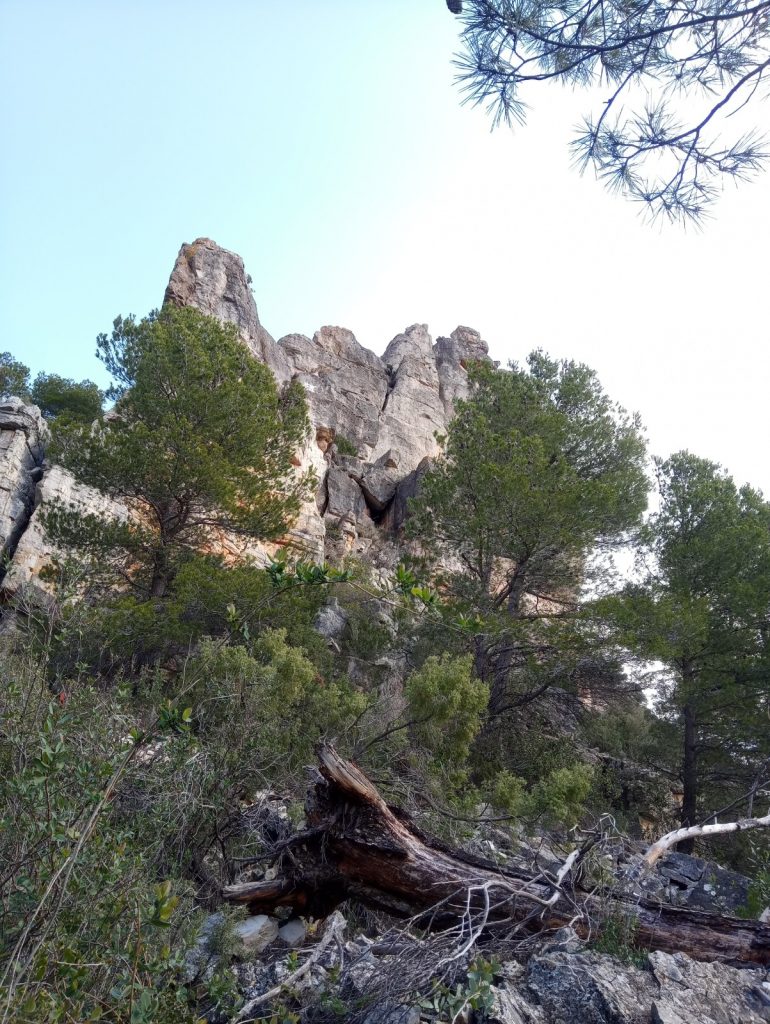
Sector Can Toni Gros
We climbed: Estrany Parany (6b): Nice recommendable warm-up. Poll remullat (6b): Also nice warm-up. Antaviana (6c+): Liked it a lot, consistent difficulty, very recommendable. Demà als innocents (7a+): Found it very hard but nice climb.

Sector El Cargol & L’esperó Primavera
We climbed: EL CARGOL El Cargolet (6a): Supernice recommendable warm-up. Purgandus populus L1 (6a) L2 (7a): Starts with a very nice easy first pitch. The second pitch is much harder: a supernice face climb that finishes with an overhang. Ari-zona (6c): Very recommendable, short route but supernice. L’ESPERÓ PRIMAVERA Marieta de l’ull viu (6a+) : Last route of the day. Nice 6a+ with one tricky move.

Sectores Ca l’auep & L’ermita (Arbolí 2019)
We climbed: CA l’AUEP La sabineta (6a): This is the only route we climbed in this sector. We didn’t really like the crack. L’ERMITA Nice crack. We parked in Arbolí and walked up to L’ermita. The path is marked. You just need to follow the L’ermita signs. El Pulgar sí tu (6b) : An ok climb. Very fast climb and unspectacular. Very easy. Don’t think it’s anywhere close to a 6b. Baba-res (6c+) : Nice climb with 2 hard moves (one at the very beginning and one just before the anchor. Seiduna (6b+) : Face climb. Very recommendable.
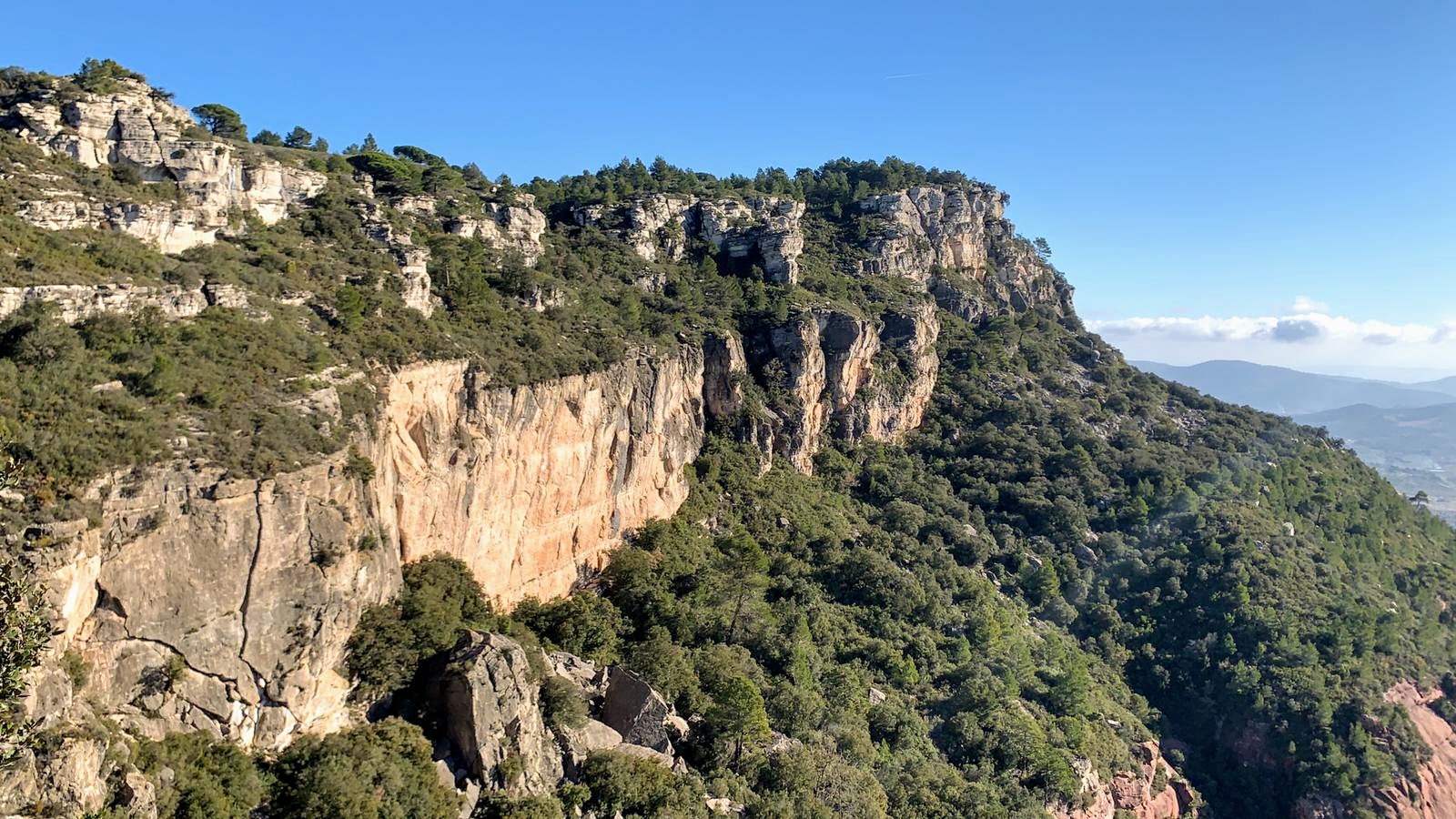
More pics (Siurana)

Share this:
About the author.
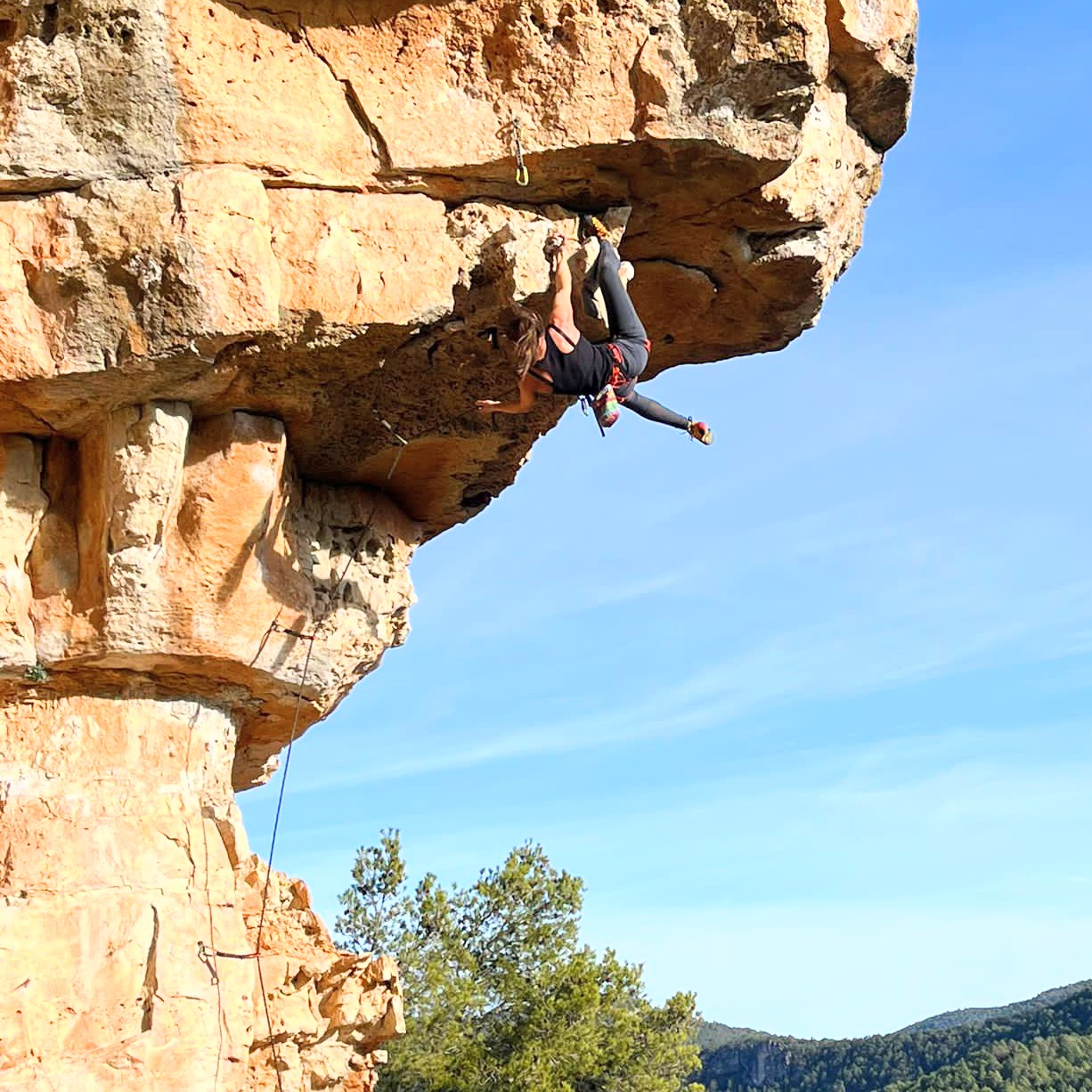
- Laidbackplaces by Laidbackplaces

Europe Rock Climbing
Guided rock climbing trips, rock climbing courses and rock climbing camps in the alps, dolomites, provence, sardinia, spain and anywhere in europe with ifmga certified mountain guides and climbing instructors.

Dolomites Rock Climbing
Alps / dolomites / italy.
Dolomites alpine rock climbing courses, camps, or private guiding.
Based in Cortina or Val Gardena B&B or hotel, or hut-based
Beginner to advanced courses, or private custom trips with optimal flexibility!

Provence Rock Climbing
Provence and cote d’azur / southern france.
Rock climbing in Provence, France
Classic Provence limestone climbing: Buis les Baronnies, Dentelle de Montmirail, Orpierre, and Les Calanques
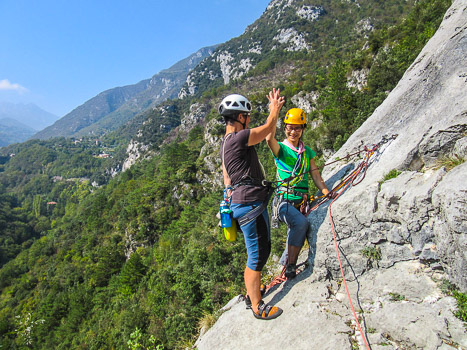
Arco Rock Climbing
Arco / lake garda / northern italy.
Multi-pitch rock climbing at Arco and Lake Garda, Italy.
Climbing classic, limestone, multi-pitch routes at Arco and Lake Garda amongst the vineyards and castles.
Office Hours
Copyright © 2024 OnTop ltd. for all images, layout and text. All Rights Reserved. Website Design & Optimization by SEO Ninja
- Haute Route Glacier Trek
- Cortina Dolomites Hut-To-Hut Trek
- Stubai Alps High Route
- Oetztal Alps High Alpine Hut Circuit
- Alps Treks & Hikes: Custom Trips and Private Guiding
- Merano High Mountain Trail
- Bernese Alps Eiger Trek
- “Best of Provence” Hiking
- Tour du Mont Blanc Hike
- Self Guided – Dolomites High Route #1
- Self Guided – Dolomites High Route #2
- Self Guided – Dolomites Hut-to-Hut Trekking
- Self-Guided – Tour du Mont Blanc Hike
- Self-Guided: Bernese Alps Eiger Trek
- Self-Guided: Merano High Mountain Trail
- Wapta Icefield Glacier Trek
- Canadian Rockies Backpacking
- Day Hikes in the Canadian Rockies
- Kids and Youth Camps Canadian Rockies
- Snowshoeing in the Canadian Rockies
- Custom and Private Guided
- Cortina Dolomites Via Ferrata Hut Trek
- Brenta Dolomites Bocchette Trail Via Ferrata
- Rosengarten Dolomites Via Ferrata Hut Trek
- Dolomites High Peaks Via Ferrata
- Arco & Lake Garda Via Ferrata
- Provence Via Ferrata & Scrambles
- Wapta Ski Traverse
- Bow – Yoho Ski Traverse
- Canadian Wilderness Ski Traverses
- Backcountry Ski Tours in the Canadian Rockies – Day Trips
- Rogers Pass Backcountry Skiing
- Stanley Mitchell Hut – Ski Touring Week
- Bow Hut – Ski Touring Week
- Purcell Mountain Lodge Ski Touring
- Sorcerer Lodge Ski Touring
- Talus Lodge Ski Touring
- Fairy Meadow Ski Touring
- Kokanee Glacier Ski Week
- Heli-Assisted Ski Touring
- AST 1 and 2 Avalanche courses
- Haute Route
- Oetztal Ski Traverse
- Silvretta Ski Traverse
- Ortler Ski Traverse
- Dolomites Ski Traverse
- Custom Private Guide
- Svalbard Ski and Sail
- Monte Rosa Peaks Traverse
- Stubai Alps Peaks Traverse
- Alps Custom Trips
- Rockies Classic Private Guide
- Arco and Lake Garda
- Bugaboos Alpine Rock
- Rockies Private Guide
- Kids Day Camps
- Introductory
- Private Guide
- Summer Camps
- Family Treks
- Risk & Responsibilities
- Cancellation Policy
- Trip Insurance

- Rock Climbing Holidays
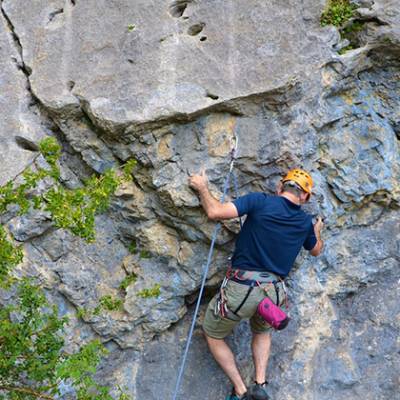
All About Rock Climbing:
Rock climbing is becoming a more and more popular sport with the evolution of climbing walls and climbing clubs in most towns and cities!
As such the sport itself has evolved into many disciplines with sport climbing, traditional climbing, bouldering and various offshoots of these!
How to Climb:
To climb, whether you are doing it at an indoor climbing wall or outdoor rock face, there are certain basic safety rules you need to learn. Climbing is done in pairs, with one person belaying and the other person climbing. The belayer ensures the safety of the climber, by holding the other end of the rope with a special friction device to stop it slipping.
If the climber is leading they will put in protection as they climb up and clip the rope into this. If climbers are using a top rope, the rope will be clipped into a 'belay' (bolts in the rock or other protection usually set up with 3 points of contact with the rock) at the top of the climb and as they climb up the belayer pulls the rope through.
Climbing Grades:
Climbing grades differ in different countries so it is best to take a comparison guide with you when travelling somewhere else to make sure you know what grades you climb correspond to!
Climbing Tips:
Learn the knots - these are your safety so should become second nature. The most basic knot is the figure of eight!
Go bouldering - this is a great way of learning how to move your body over rock, practice moves and problem solve on rock at ground level so you can't fall very far!
Keep calm - climbing is all about mind over matter. It's normal to feel scared when you are 10 metres up a sheer cliff. The trick is to manage your fear and bak it work for you!
Use your whole body - don't just rely on your arms to haul you up. Use your body and push up with your legs - these have your strongest muscles!
- View holidays
- View on map
The World's Best Rock Climbing Destinations
:max_bytes(150000):strip_icc():format(webp)/Becker1-5b734a56c9e77c0025caddbd.jpg)
Pété Lomchid/Getty Images
Thanks to the meteoric rise in popularity of climbing gyms across the country, combined with the recent success of the film " Free Solo ," rock climbing has seen renewed interest with the general public. Requiring both physical and mental focus, the sport is luring more outdoor athletes than ever before, with many intrigued by its mix of strength, agility, and concentration. It also doesn't hurt that some of the best rock climbing also happens to take place in some breathtakingly beautiful settings. So, if you're planning a climbing-focused trip—or just want to work in some time on the rock on your next vacation—we have some suggestions on where to go. These are our picks for the best climbing destinations in the world, any one of which will leave you blown away with their amazing and dramatic landscapes.
Rock climbing can be a dangerous activity and should only be undertaken by those who have the experience and skills necessary to attempt the sport. Beginner climbers should always go with an experienced guide and have all of the proper equipment they need to climb safely.
Yosemite National Park, California
Kraig Becker
Any list of great rock climbing destinations has to include Yosemite National Park near the top. For many climbers, Yosemite is the place to go for big wall climbing in the entire world, literally offering thousands of routes to choose from. The park also happens to be home to El Capitan, arguably the most famous vertical rock formations on the planet, though Half Dome is also a major draw. These well-known landmarks are just scratching the surface of what Yosemite has to offer however, making it a must-visit place for any dedicated climber.
Zermatt, Switzerland
Cornelia Doerr / Getty Images
If there is a place that rivals Yosemite in terms of great climbing, it just might be the town of Zermatt in Switzerland. Often regarded as the birthplace of alpine climbing, Zermatt offers access to 38 peaks of 13,000 feet in height or more, all within close proximity. Amongst the mountains that are accessible from here are the famous Matterhorn and the infamous Eiger, which both present interesting challenges for climbers and make valuable additions to any climbing resume.
Red Rocks, Nevada
Not everyone knows it, but just a short drive outside of Las Vegas sits one of the absolute best climbing locations in the entire world. In fact, in less than an hour you can leave the glitz and glamour of the strip behind and be tied in on a rope on some truly iconic routes. The sandstone cliffs of Red Rocks are accommodating to beginners and veteran climbers alike, with an amazing setting that feels like it is miles away from civilization. This makes it perfect for those who want to climb a few pitches before lunch or spend the entire day working multiple routes. There is even excellent bouldering in this desert oasis, which is so good that it even convinced "Free Solo" star Alex Honnold to move there.
Kalymnos, Greece
Westend6 1 / Getty Images
Europe's other rock climbing epicenter can be found in Kalymnos, Greece, a place that offers an amazing blend of sun, sea, and history to go along with its amazing limestone. With hundreds of routes to choose from, climbers will find options for every skill level, making this a fantastic choice for both experienced and beginning climbers alike. And with its steady Mediterranean weather, the rock walls are accessible all year round, something that can't be said for most of the other locations on this list.
Rocklands, South Africa
Timo Junttila / 500px / Getty Images
For some of the best bouldering in the world, head to the Rocklands in South Africa. A subset of rock climbing, bouldering involves scaling large rocks (a.k.a. boulders), as opposed to large rock walls. The routes tend to be shorter and closer to the ground, but they are still intense, challenging, and physically demanding. That's exactly what climbers find in this outdoor playground, where the desert landscape, punctuated with hundreds of boulders to climb, make for an amazing place for newbies and the highly experienced alike. Sport and traditional climbers will still find routes to challenge their skill sets too, making this a well-rounded destination for those looking for a climbing outlet to put their skills to the test in Africa.
The Dolomites, Italy
Danita Delimont / Getty Images
Often compared to Yosemite National Park in the U.S., the Dolomites of northern Italy offer everything a rock climber could ask for. Here, you'll find dramatic landscapes, amazing history and culture, and countless climbing routes to choose from. It isn't the large number of routes that makes this place such a great option for climbers, but rather the variety of options that are available. Experienced alpine climbers will marvel at the towering spikes that rise 8,000 to 9,000 feet into the air, while sport climbers can enjoy shorter, but no less challenging, pitches down below.
Tonsai, Thailand
Alex Eggermont / Getty Images
Thailand isn't a country that leaps to mind when it comes to great rock climbing, but the country is blessed with some fantastic locations nonetheless. Of those, Tonsai is arguably the best, offering an excellent blend of sun, beach, nightlife, and outstanding limestone walls to explore. From towering cliffs to shorter sport routes—not to mention some excellent bouldering—Tonsai has it all. The tropical setting means climbing all year round is a possibility too, though the heat and humidity may require a splash in the ocean afterwards. Best of all, climbing in Tonsai is very affordable, making it accessible for visitors looking for just a day or two on the rocks, or who are centering their entire vacation around climbing.
epicurean / Getty Images
Stretching across the southernmost tip of Chile and Argentina, Patagonia is another outstanding destination for climbers. Often described as one of the most spectacular wilderness regions on the planet, Patagonia is home to some of the most famous climbing walls and towers in the world, even rivaling those found in Yosemite. The most prominent of these is the Torre Egger and Fitz Roy, both of which should be left to the more experienced athletes. But there are plenty of easier routes to test your skills on, not to mention great bouldering, too. And because Patagonia is such an expansive place, it is easy to find peace and solitude at the crag for those looking to escape the crowds that are common elsewhere.
The Bugaboos, Canada
Suzanne Stroeer / Aurora Photos / Getty Images
Located in British Columbia, Canada, the Bugaboos are a small mountain range that is big on rock climbing. Offering a smilier experience to the French Alps in Europe, this amazing location has a number of world-renowned routes that lure in top climbers from across the globe. But it also has a stunning variety of climbing options, making it a good choice for those who are just learning the sport as well. The gorgeous scenery doesn't hurt either, offering plenty to look at while both on and off the wall.
The Peak District, United Kingdom
Cavan Images / Getty Images
With a name like "the Peak District," you know that a place has to offer outstanding climbing. That's exactly what you'll find when you visit England's premiere destination for rock climbers, which is located in the north-central part of the country. In this national park, visitors will discover plenty of great hiking, with trails often leading to some excellent climbing walls, too. The routes vary in size and complexity, with something to offer just about any type or experience level of climber.
Red River Gorge, Kentucky
Marc Pagani Photography / Getty Images
Kentucky's Red River Gorge is a haven for sport climbing, which favors the use of permanent bolts and anchors over more traditional (or "trad") climbing, which sees individuals placing and removing the safety equipment as they go. Known for its amazing scenery, the gorge is massive in size and scope and is home to a seemingly endless supply of routes. It is safe to say that a beginner could learn the sport of climbing here and perfect their skills, all without ever completing all of the different routes in their lifetime.
Hueco Tanks, Texas
Alexandra Kahn / Getty Images
North America's answer to Rocklands is Hueco Tanks. Often ranked as the best bouldering site in the entire world, this place can be found a short drive from El Paso, Texas, and is surrounded by a high-altitude desert that is as beautiful as it is stark and rugged. Hueco Tanks draws climbers in from around the world, many of which come to attempt some of the park's more challenging and well-known routes. The place has become so popular however, that now just 70 people per day are allowed inside. This move was made to protect the fragile environment, so if you're planning on going, be sure to get a reservation early .
Mallorca, Spain
mFurra photography / Getty Images
The Spanish Mediterranean island of Mallorca is yet another location that blends warm weather, lovely beaches, and excellent opportunities for climbing. The limestone cliffs found on the island provide excellent opportunities for climbing of all types and difficulties, with well established routes that are among the very best in Europe. Mallorca is also one of the top destinations for "deepwater soloing," which involves climbing up rock cliffs and towers that are found along the coastline. Deepwater soloists don't use ropes or other safety devices, so when they fall they land safely in the water below. This provides a measure of safety that isn't found in other types of soloing and opens the door to new possibilities for the sport.
Fiordland National Park, New Zealand
Ketkarn sakultap / Getty Images
It's hard to top New Zealand when it comes to amazing outdoor landscapes and adventure activities, and that is true for rock climbing, too. There are numerous places across both the North and South Island to climb, but for our money, Fiorldand National Park on the South Island is the best. Much like Yosemite, it has hundreds of different routes to choose from with options for all levels of experience. Those looking for especially challenging climbing should head to the Babylon Crag, which is home to what might be the hardest climbing opportunity in the entire country.
Verdon Gorge, France
Dhwee / Getty Images
The climbing routes found in the Verdon Gorge of France require not just skill, but also finesse and athleticism. Here, it's all about being able to move your entire body, requiring climbers to be well-rounded in their skill set and approach. The gorge has been a popular destination for outdoor athletes since the 1970s and one look around will tell you why. It offers an amazing blend of epic rock climbing and unbelievable scenery, with a tremendous support community, too. All of these elements come together to make Verdon a truly magical place for climbers of all ages.
Want to Take Up Mountaineering? Get Started With These 8 Mountains
The 10 Best Hikes in Utah
The 9 Best New Hiking Trails of 2022
All the Gear You Need to Go Rock Climbing
The 15 Best Places in the U.S. to Go Rock Climbing
Ship Rock: What to Know About This Sacred Navajo Peak in New Mexico
The 10 Best Hikes in Smoky Mountains National Park
The 10 Best Hiking Trails Found Inside America's National Parks
The Best Long-Distance Hiking Trails in the World
The Best Hikes in Grand Canyon National Park
How to Trek Nepal's Annapurna Circuit
Nine Basic Types of Climbing Handholds
The 10 Most Dangerous Hikes in the World
Navigation 101: Skills and Tools for Finding Your Way on a Hike
Here's What You Need to Know Before Going Rappelling for the First Time
The 10 Best Hikes in Glacier National Park

European road trips you need to try once in your life

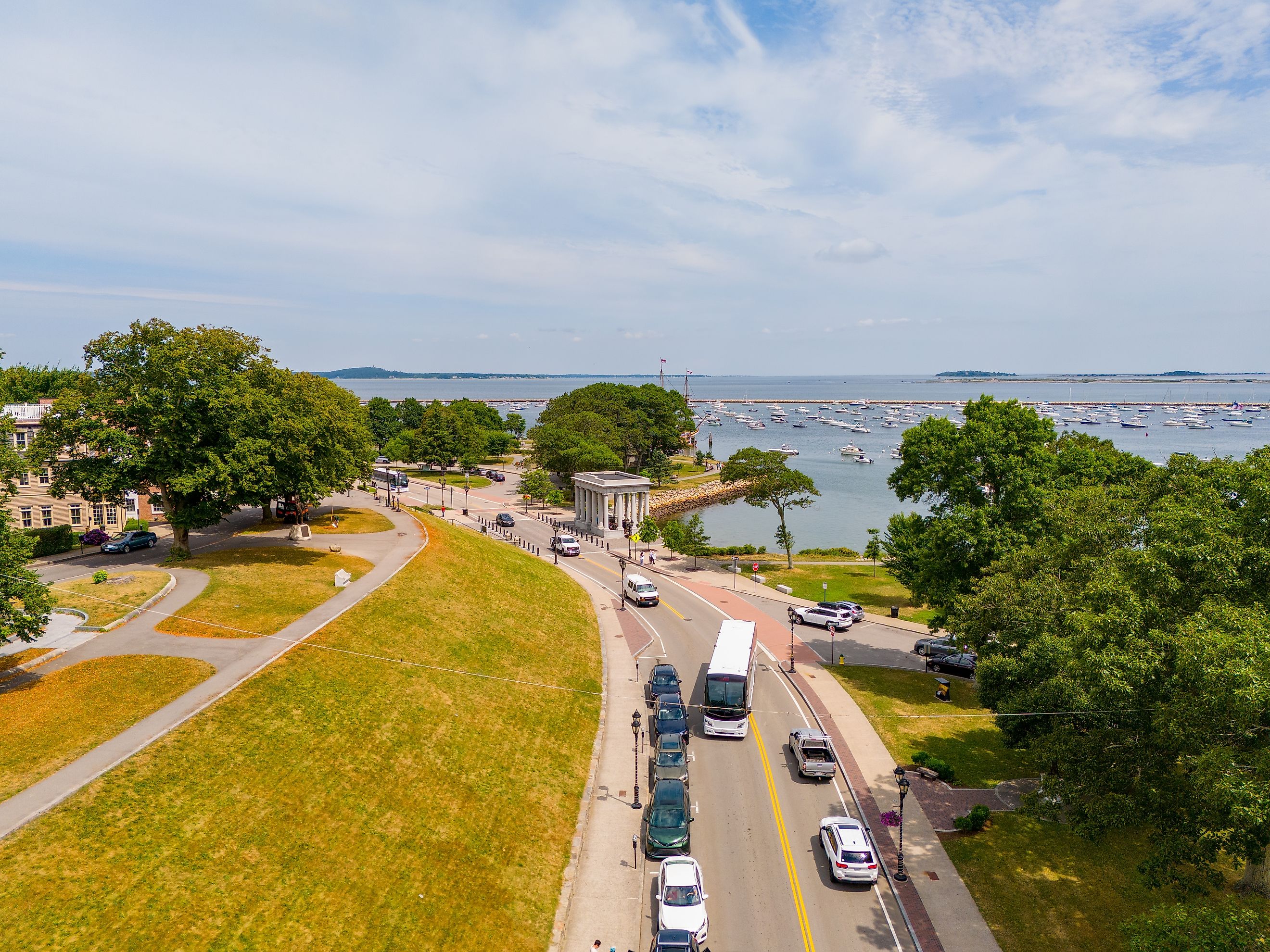
10 Best Road Trips to Take in Massachusetts
A laid-back road trip along Massachusetts' renowned highways offers travelers a unique opportunity to discover some of the country's most diverse and picturesque natural landscapes. From the sandy shores hugging Cape Cod in the east to the dense forests synonymous with the Berkshires in the west, it is a journey with a mixed bag of delightful surprises.
Between the start-off point and the destination, cute little towns, beautiful state parks, and roadside attractions present road-trippers with a glimpse of the state's historical heritage, cultural outlook, and natural splendor for a wholesome experience. Whether you are embarking on a solo trip or journeying with friends and family, these are some of the best road trips to take in Massachusetts.
Connecticut River Byway (39 miles / 63 km)
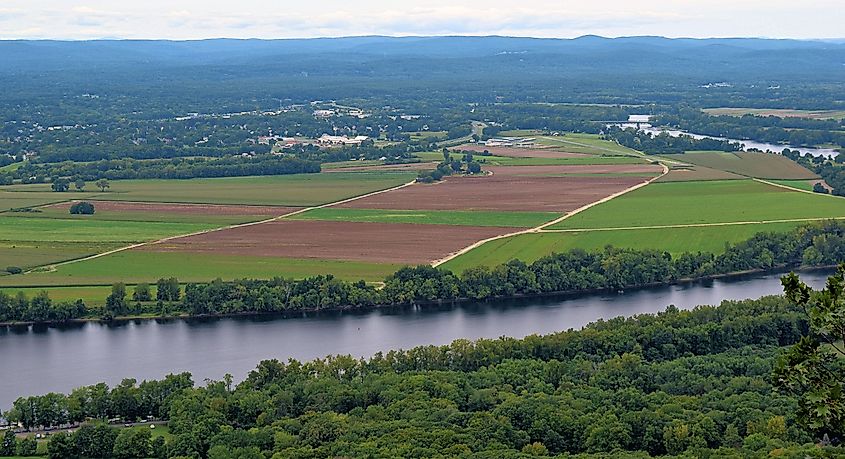
The scenic Connecticut River Byways stretches 39 miles (63 km) from north to south along the fertile course of the Connecticut River Valley. It is an exciting journey that exposes travelers to early American history as it passes through several historic villages dating back to Colonial times. Boasting several recognized historical sites and monuments along the route, there is no shortage of roadside entertainment to fuel your excitement. Some notable highlights to watch out for include the Connecticut River Greenway State Park, which offers 1,000 acres of hiking trails, waterfront vistas, and wildlife-watching opportunities.
The road also traverses the town of Deerfield, where the iconic Historic Deerfield Living History Museum profiles the colorful past of the Connecticut River Valley. In addition to the different sites, drivers can abandon their vehicles to exercise their legs while soaking up rich outdoor scenery.
Mohawk Trail Scenic Byway (69 miles / 111 km)

This beautiful roadway opened in 1914 and became a sought-after route for adventure lovers looking to discover the beauty of rural Massachusetts . The Mohawk Trail Scenic Byway stretches 69 beautiful miles (111 km) and links dramatic vistas, historic towns, and scenic hiking trails for an unforgettable escapade. The trip exposes bustling art communities showcasing rich local heritage. As it meanders through Williamstown, you can take a break to explore intricate creations inside the Williams College Museum of Art.
The journey also crisscrosses several rivers, allowing access to fun adventures like rafting and kayaking on the Deerfield and Millers Rivers. Meanwhile, hiking enthusiasts will gladly take on the Mahican-Mohawk Trail to test their mettle.
Mount Greylock Scenic Byway (16 miles / 26 km)
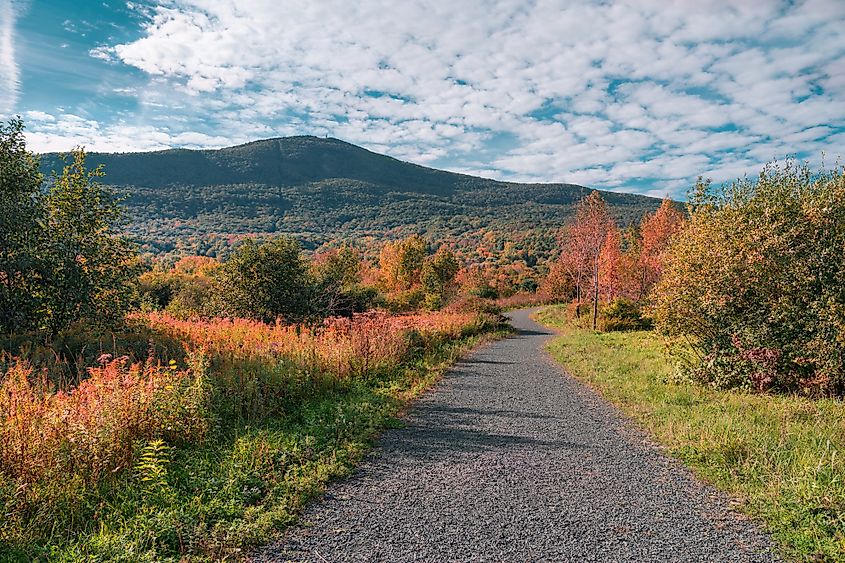
Discover the beauty of the Mount Greylock State Reservation along this 16-mile (26 km) climbing path in the Berkshire Mountains. The route's high altitude delivers stunning views of Massachusetts backcountry gems. It comes to its own in fall, with the changing foliage transforming the environment into a colorful natural wonder. Travelers following the parkway can access 70 miles (112 km) of nature trails that accommodate hikers, bikers, and bird-watchers, highlighted by a section of the Appalachian Trail .
The Bradley Farm Trail Loop is one of the most popular hikes for tourists looking to explore the thick wilderness surroundings. Dozens of vantage points encourage road-trippers to pause momentarily and take in the stunning scenery from above.
Historic Route 6A (62 miles / 100 km)
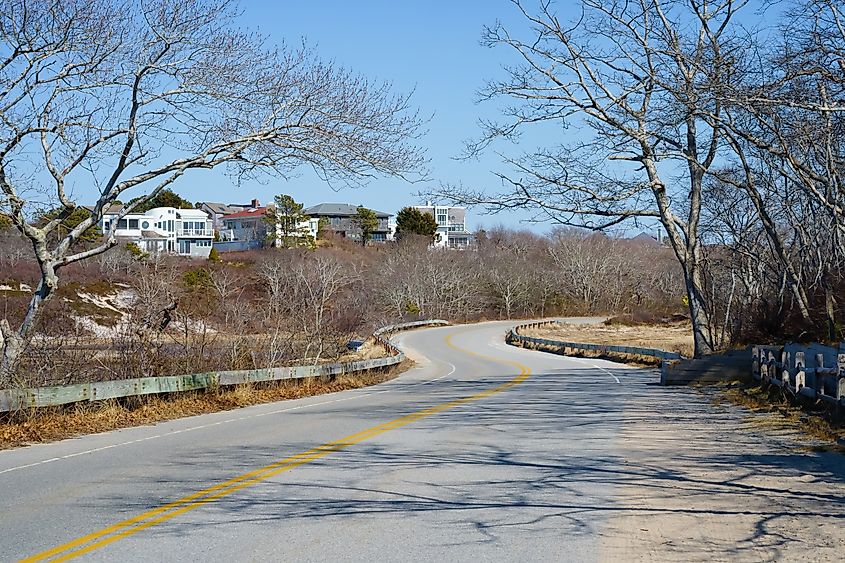
This scenic road along Cape Cod is also called the Old King's Highway. It cuts through a wealth of timeless historic sites, making it one of the best road trips to take in Massachusetts. The highway spans 62 miles (100 km) between Bourne and Orleans and traverses a combination of preserved farmland, salt marshes, and coastline. Driving along is a chance to witness centuries-old architectural styles in historic homes, restored inns, and ancient churches. Be sure to check the Old King's Highway Historic District of Barnstable, which houses over 500 ancient buildings and is listed on the National Register of Historic Places.
Other than history, alternative activities include walking on sandy beaches. Another exciting consideration is stopping by the beautiful Cape Cod Organic Farm to shop for fresh vegetables and organic meat.
Jacob's Ladder Scenic Byway (35 miles / 56 km)
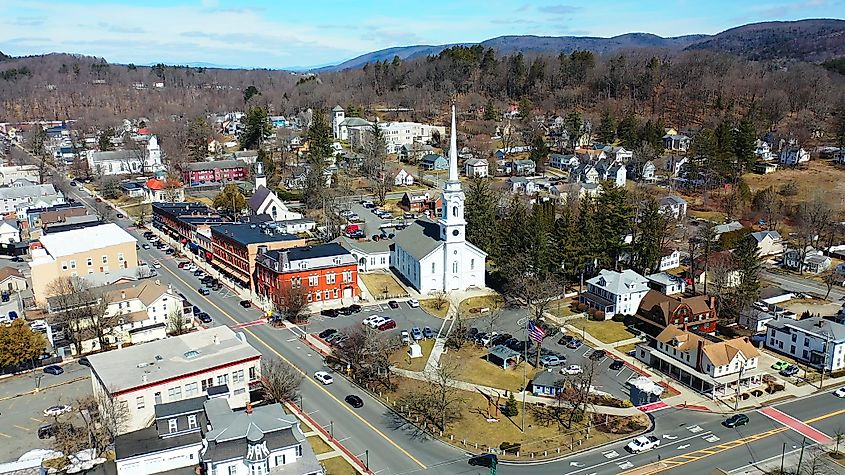
This beautiful pathway is considered the ideal option for travelers visiting western Massachusetts. It sprawls approximately 35 miles (56 km) and crosses several towns along the foothills of the Berkshire Mountains. These include Lee, Becket, Huntington, Chester, and Russel, which serve as worthwhile stops with interesting local attractions during your trip. Jacob's Ladder Scenic Byway delights with well-preserved historical living history and a taste of unique New England culture.
Cultural attractions worth checking out feature the popular Jacob's Pillow Dance Festival, scheduled for August in the historic community of Becket. Furthermore, consider pausing the journey in Lee to admire 19th-century architecture and spend quality time shopping cheaply at the Lee Center.
Essex Coastal Scenic Byway (90 miles / 145 km)
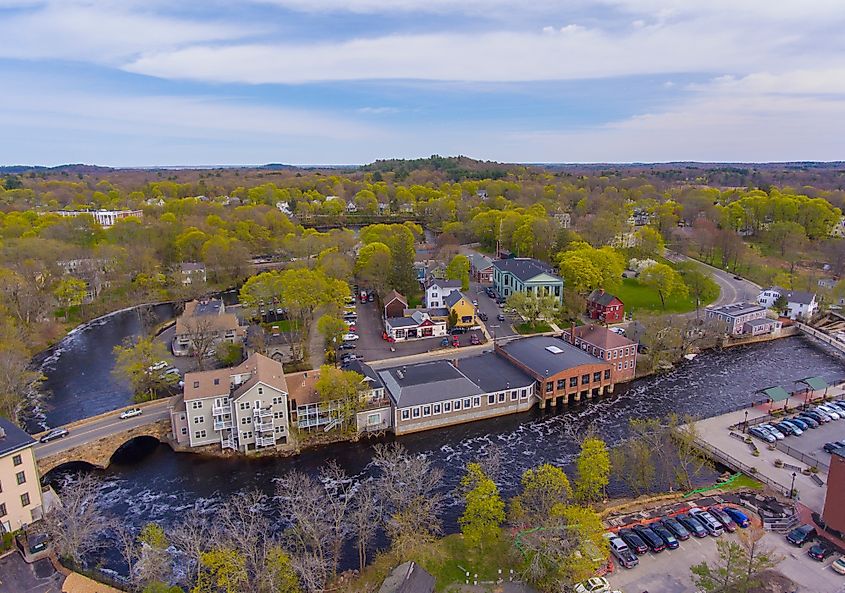
Explore historic seaports, ancient villages, and Colonial farms when traveling along this extensive roadway along Massachusetts North Shore. The Essex Coastal Scenic Byway stretches approximately 90 miles (145 km) and winds past several beautiful communities with exciting legacies, including Gloucester and Newburyport. Each stop has something to offer tourists traveling the byway. For instance, Ipswich harbors a delightful coastal atmosphere flanked by a collection of First Period dwellings providing a window to the 17th and 18th centuries. Meanwhile, Newburyport delights with its shipbuilding heritage and distinct Federal-era architecture.
Also, Essex has pleasant antique shops where you can hunt for vintage souvenirs. Those who appreciate Mother Nature's beauty can discover a thriving ecosystem across the Parker River National Wildlife Refuge.
Battle Road Scenic Byway (15 miles / 24 km)
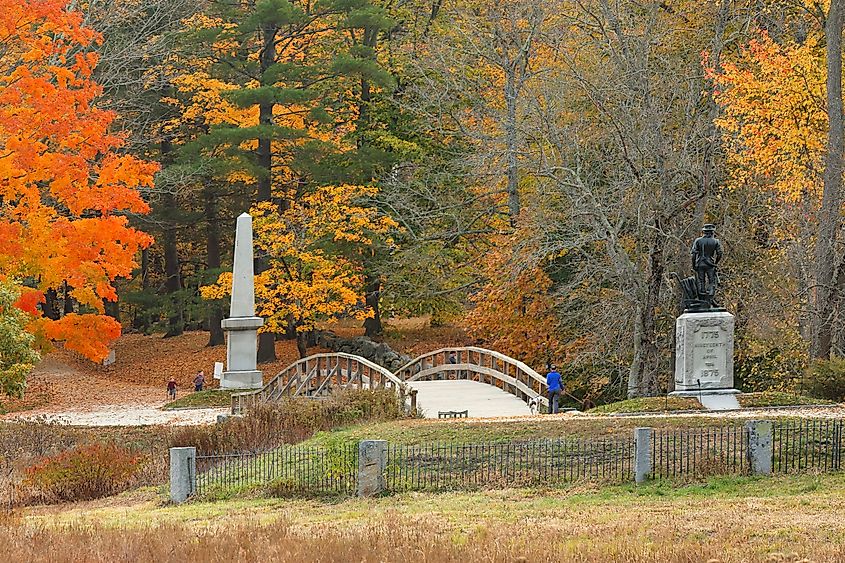
This historic pathway follows the route used by the British regulars in the lead-up to the American Revolution. It extends approximately 15 miles (24 km), plying through the quiet towns of Lincoln, Lexington, and Concord . While the journey is relatively short, multiple points of interest along the way allow you to prolong the experience while making it fun and memorable. Exploring the route offers a fresh perspective on the American Revolution by exposing users to literary and technological implications associated with the landmark event.
Noteworthy highlights that add to the experience on the road include Lexington Battle Green, a landmark conflict location that altered colonists' relationship with the British government. The route also traverses a portion of the sprawling Minute Man National Historical Park.
Central Hills Loop (57 miles / 92 km)
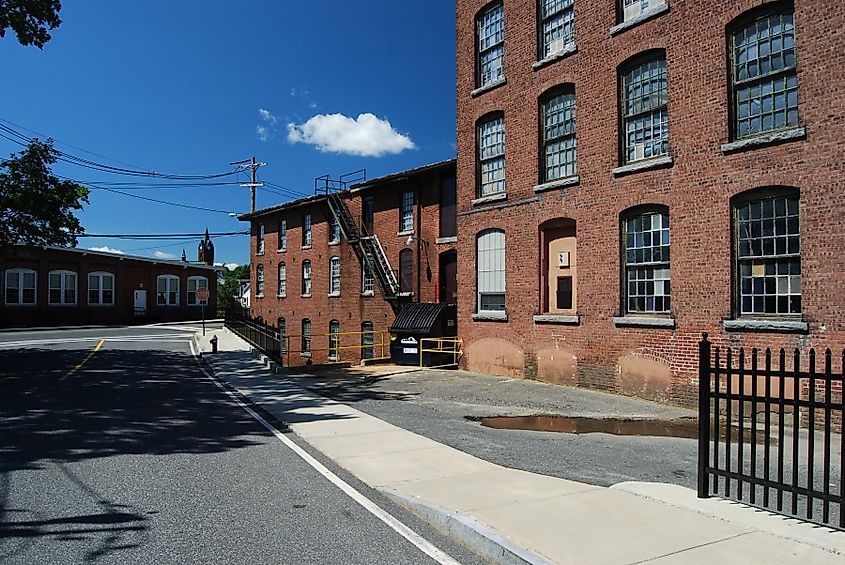
This remarkable 57-mile (92 km) journey takes tourists through several beautiful towns in central Massachusetts, each with unique natural scenery and points of interest. Possible stops in your itinerary are New Salem, Ware, Hardwick, and Pelham. While the Central Hills Loop is accessible throughout the year, fall is the best season for this trip as the foliage changes color. Besides the alluring greenery, you can stop at different overlooks to catch glimpses of stunning rock formations.
As you start, pass by the New Salem Preserves & Heritage Cider and sample delicious apples from the region and well-prepared doughnuts to stock up for the journey ahead. Upon reaching Hardwick, you will want to pull over to the curb and enjoy the cozy atmosphere of its historic covered bridge.
Boston to Plymouth (40 miles / 64 km)
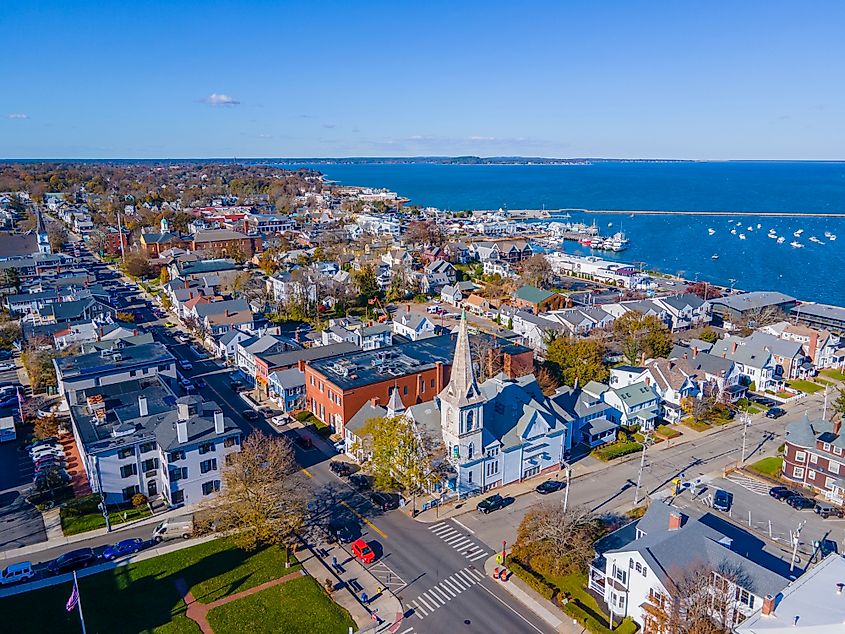
Boston makes for an idyllic jump-off base for visitors planning to explore the state on an exciting road trip. The journey from Beantown to Plymouth lasts about an hour and covers 40 miles (64 km), delivering a mix of historical and urban attractions as you move along. While you will not run out of points of interest worthy of a stopover, the Plimoth Patuxet Museums (otherwise known as the Mayflower Museum) is an enticing prospect, presenting an opportunity to familiarize yourself with historic immigrant crossings.
Once in Plymouth, consider going for a captivating whale-watching excursion off the Atlantic coast, with a chance for rare encounters with humpback and pilot whales. Alternatively, you can visit Stellwagen Bank Marine Sanctuary to admire its cute sea creatures.
Lexington to Concord (7 miles / 11 km)
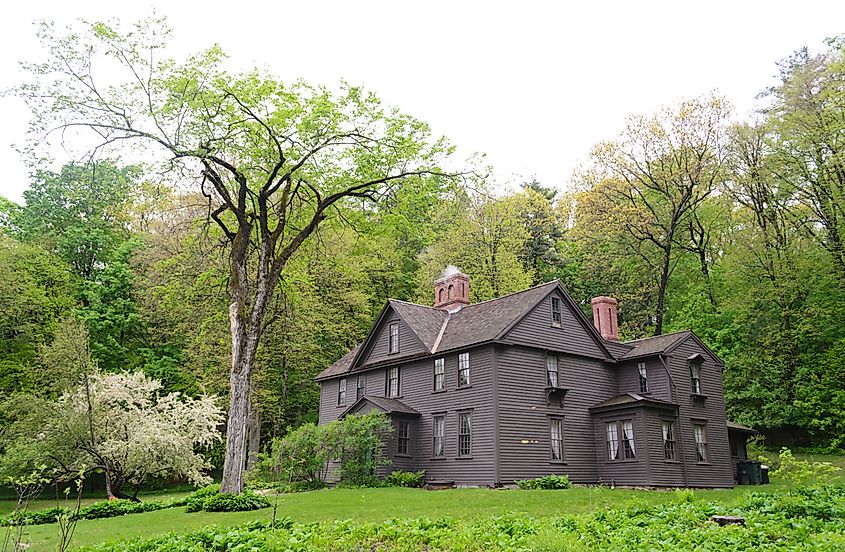
This short trip between these two iconic Massachusetts towns is perfect for those who do not have much time to spend on the road. It takes about 15 minutes between Lexington and Concord, and road trip fans get a front-seat pass to the inner details of the American Revolutionary War when driving along the 7-mile (11 km) highway. The major highlight here is the Minute Man National Historical Park, which provides a glimpse into the landmark conflict and several factors that led to its occurrence.
The site hosts several battlefields and historic structures, allowing you to relive the famous dispute. Although there are not many attractions on the road, the trip's historical significance makes it a popular option when your time is limited. The route also passes along the Louisa May Alcott’s Orchard House and Concord Museum for endless exhibits into the past.
Final Thoughts
Whether you seek to experience scenic coastal views, historic small towns, or bustling urban attractions, the Bay State delivers memorable backroad adventures. From Cape Cod to the Berkshires, each region uncovered along these beautiful road trips to take in Massachusetts immerses travelers in the diverse charms this New England jewel offers. Explore beaches, forests, museums, charming ports, and more without missing the experiences that make Massachusetts a top destination. Planning a variety of loop trips for the year guarantees pleasant discoveries around every bend in the road.
More in Places
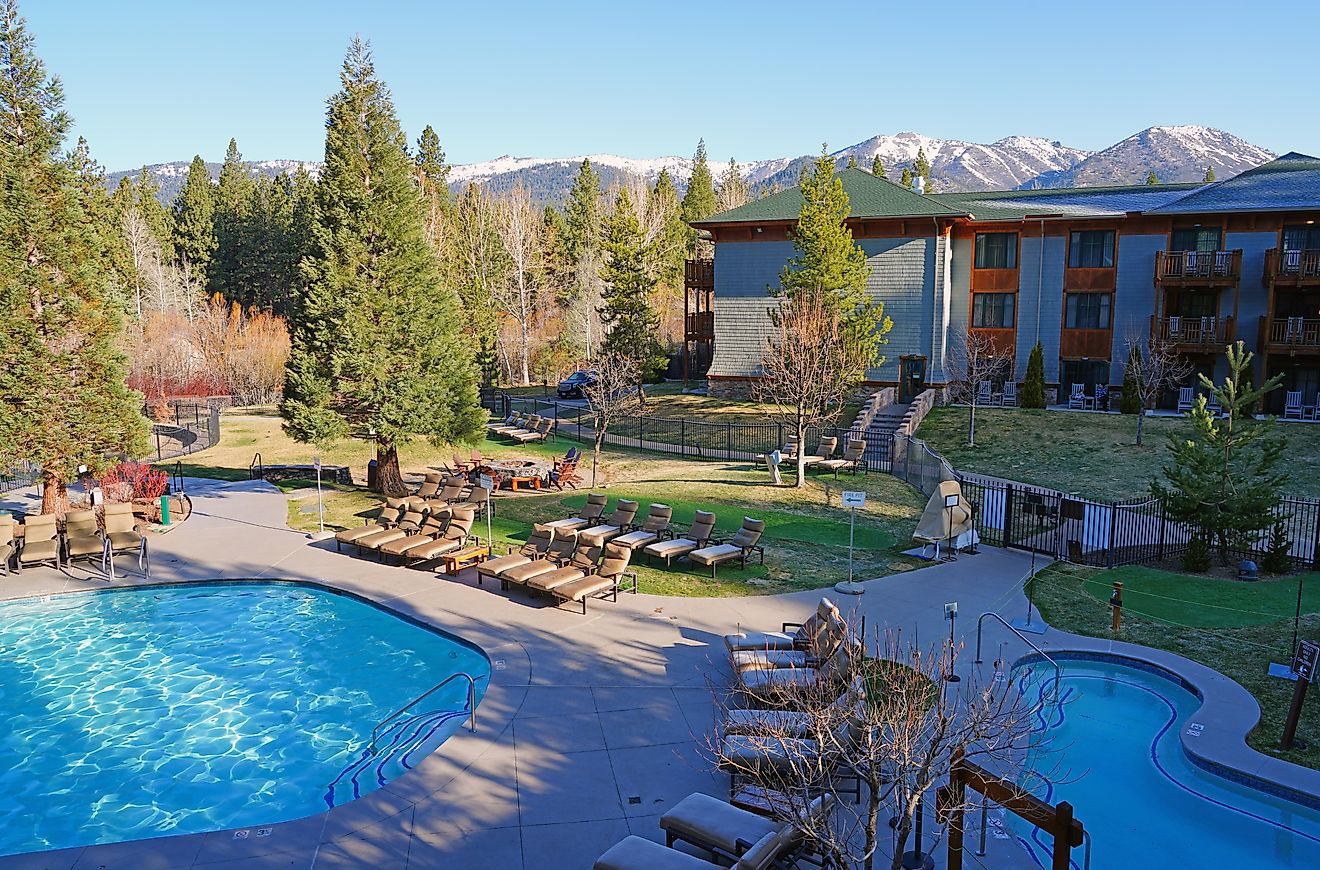
7 of the Most Charming Towns in Nevada
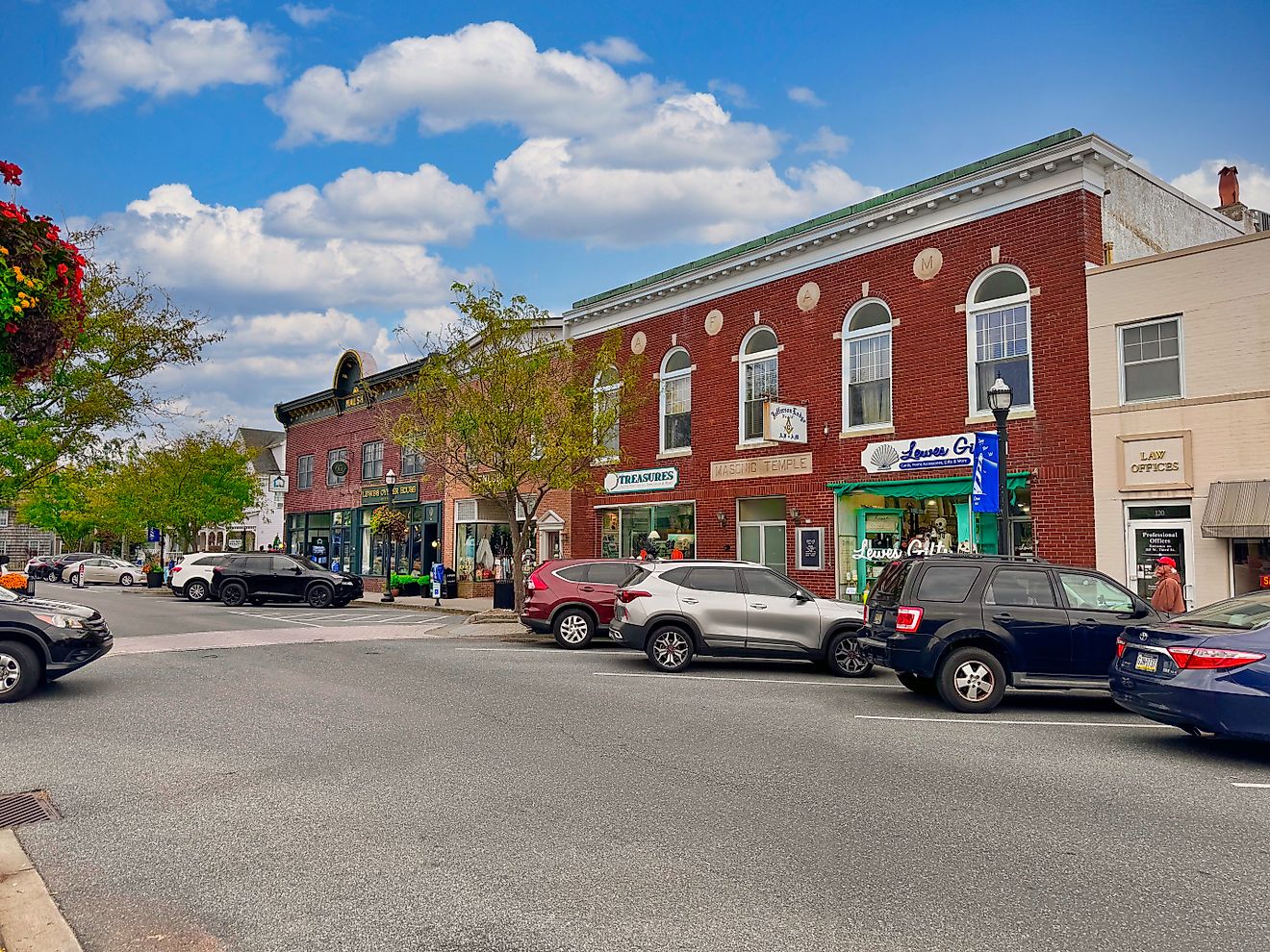
9 Prettiest Towns to Visit in Delaware
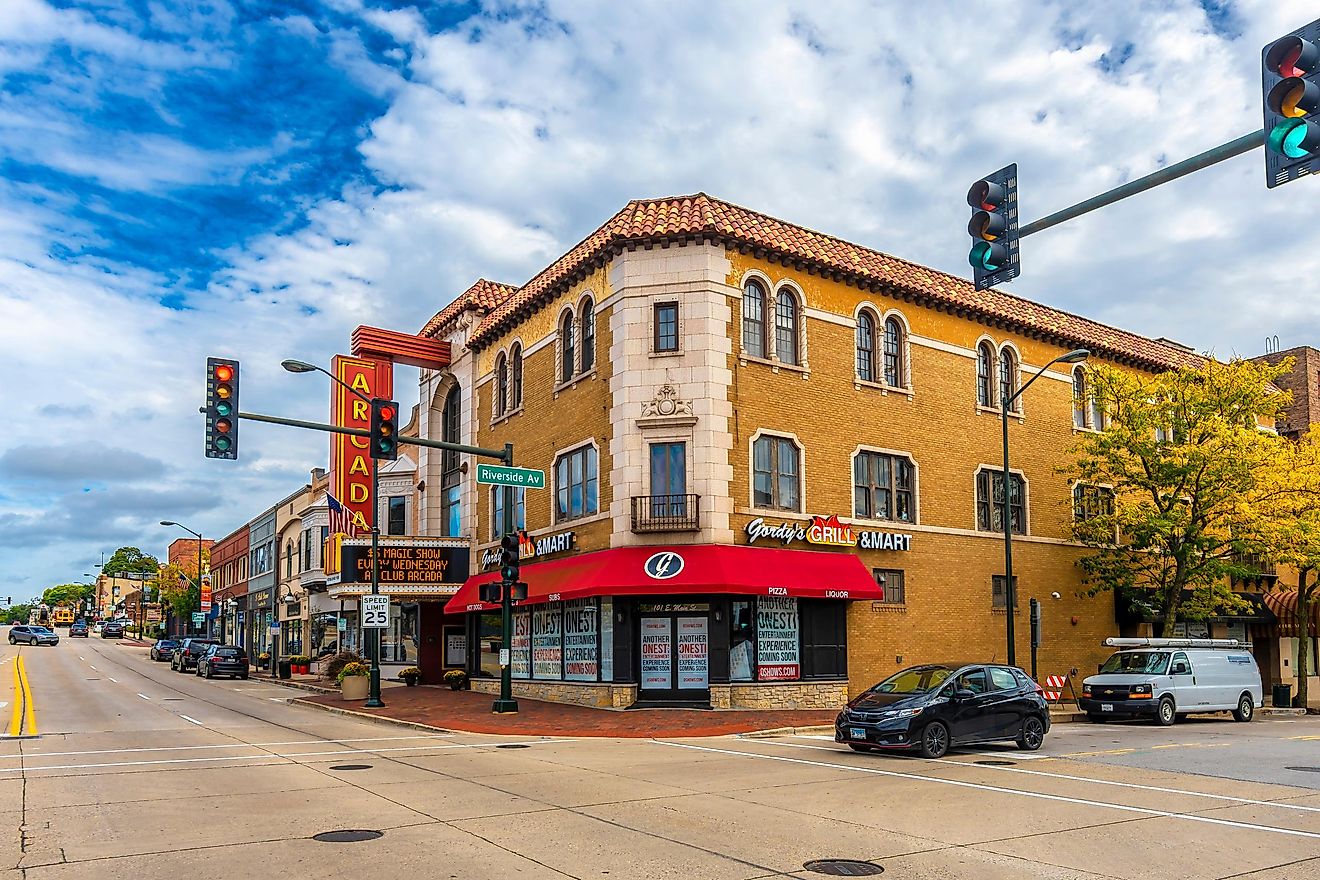
7 Illinois Towns that Were Ranked Among US Favorites in 2024
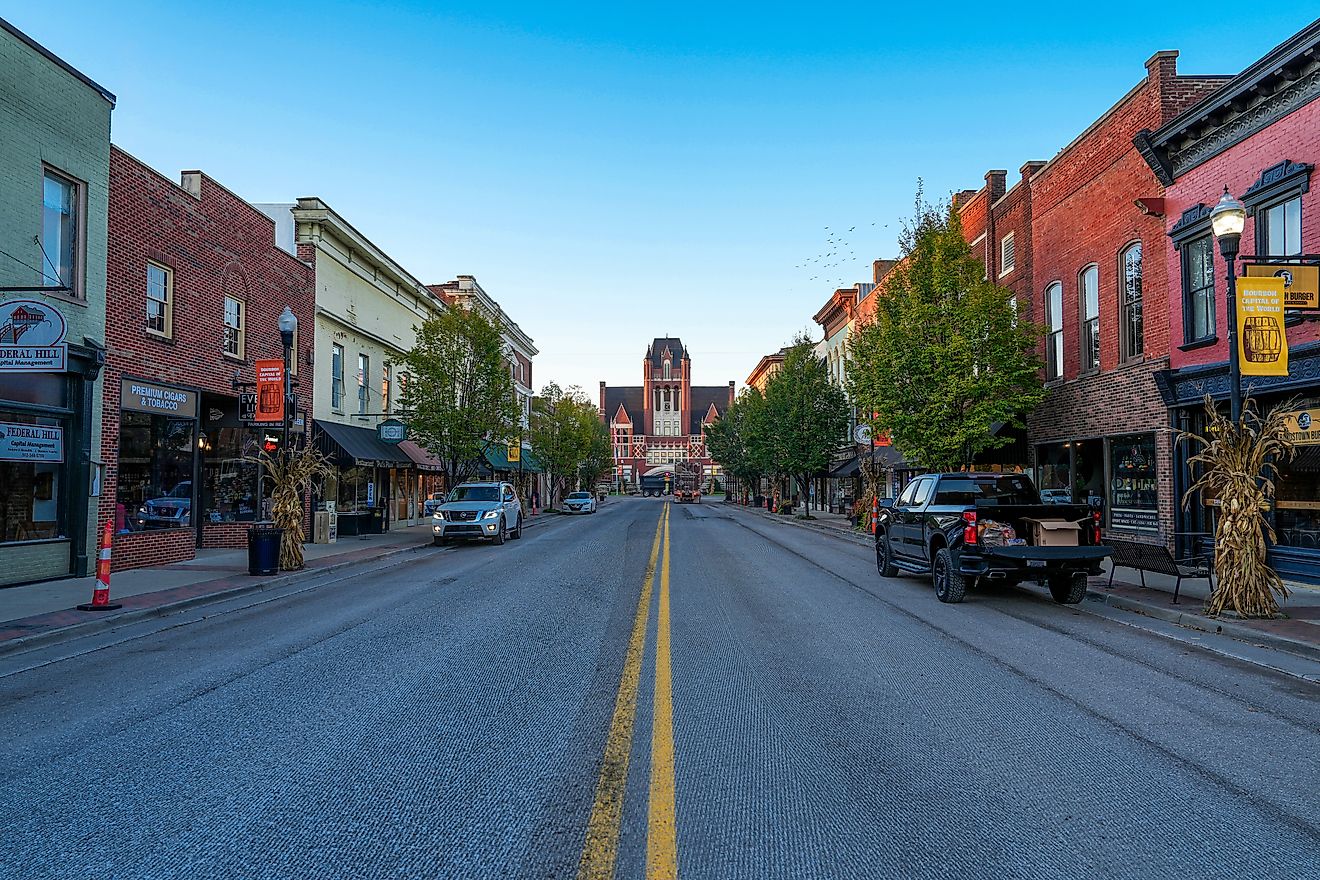
Kentucky's Best Small Towns for a Weekend Escape
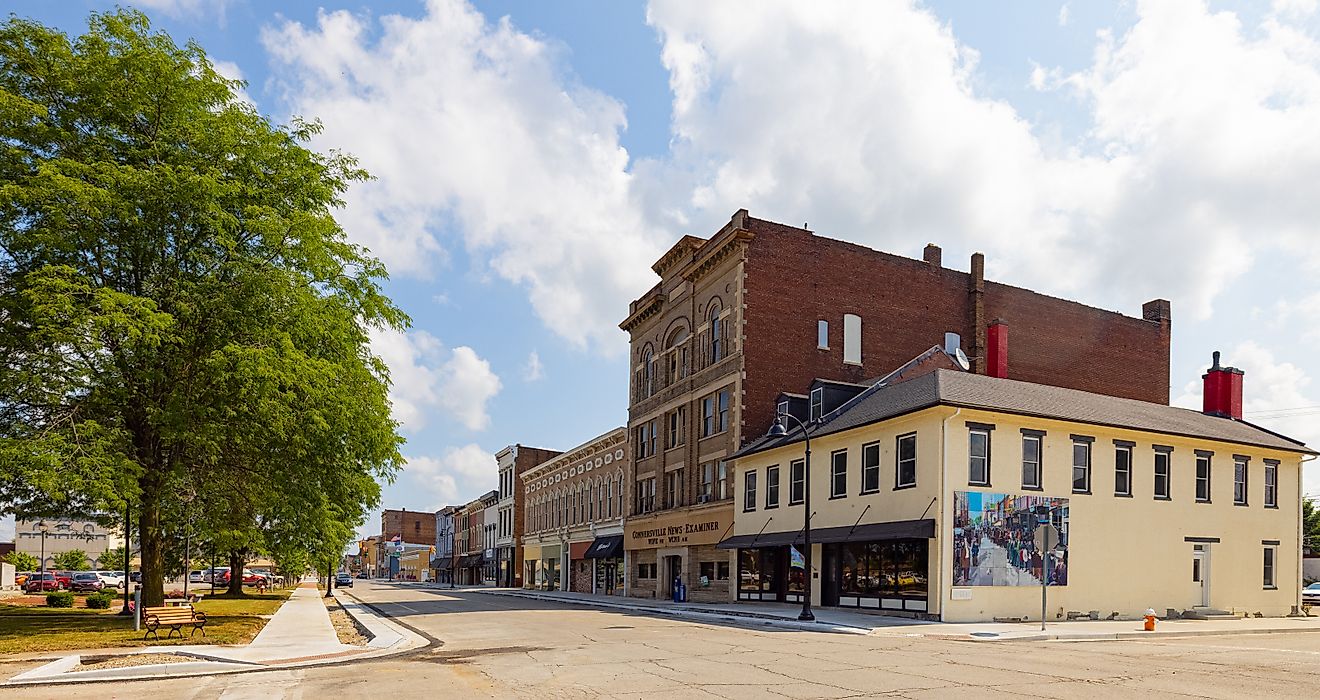
8 Budget-Friendly Towns In Indiana For Retirees
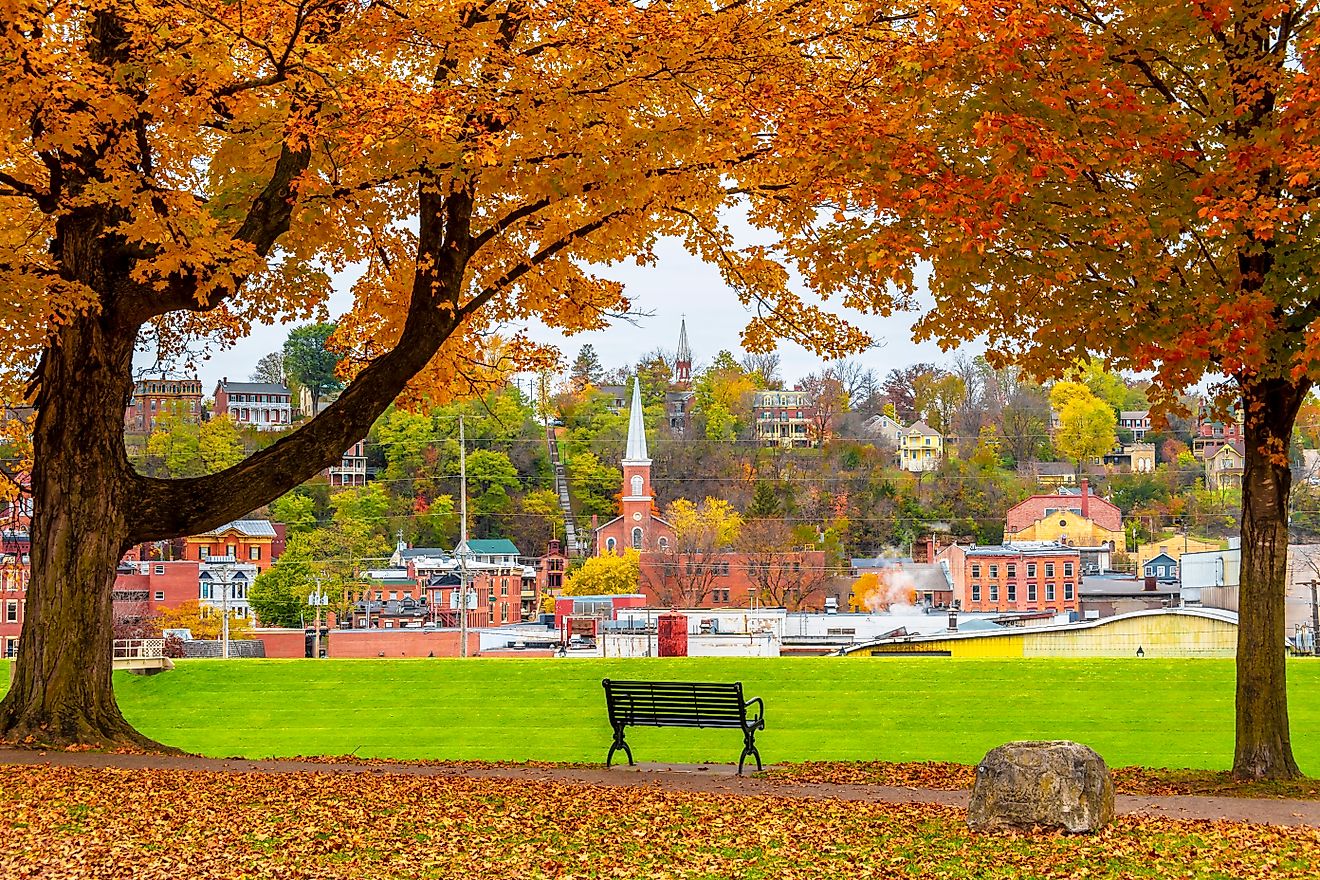
8 Best Small Towns In Illinois To Visit In 2024
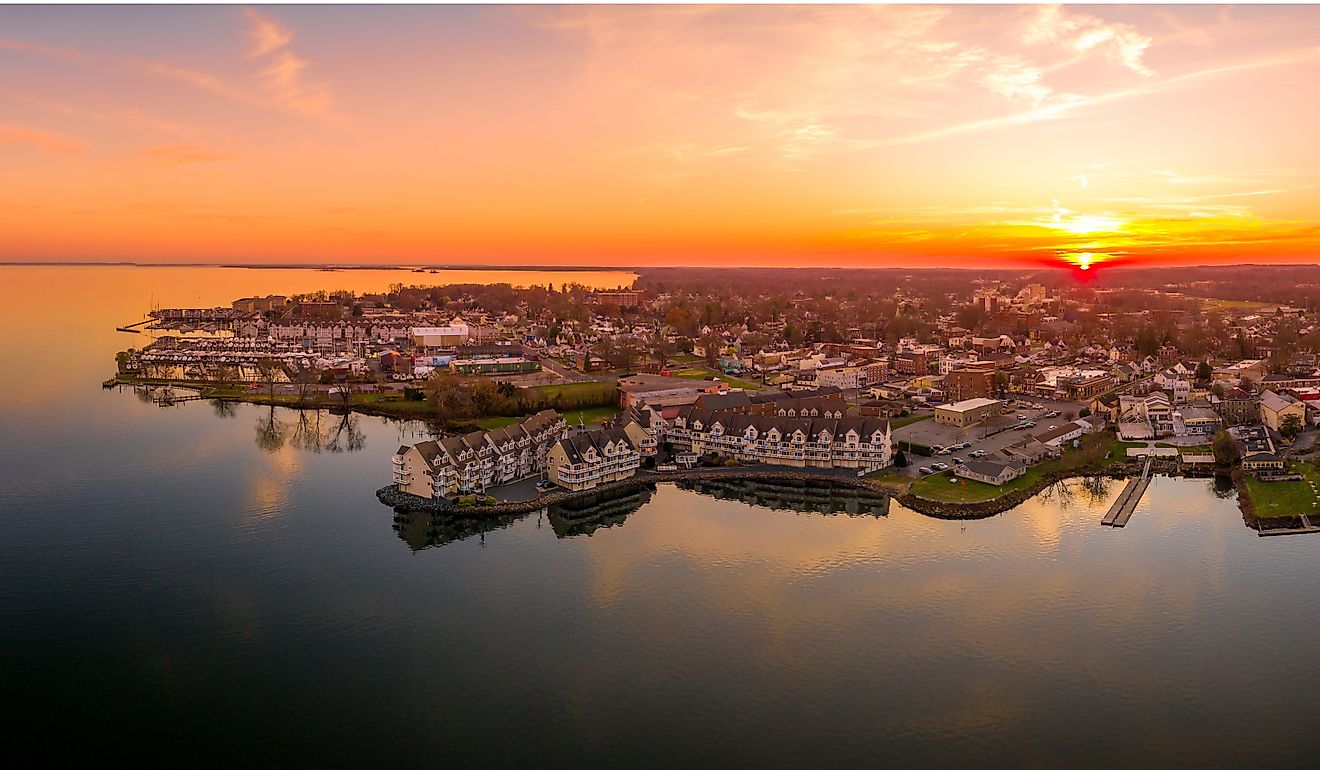
9 Prettiest Maryland Towns to Visit in 2024
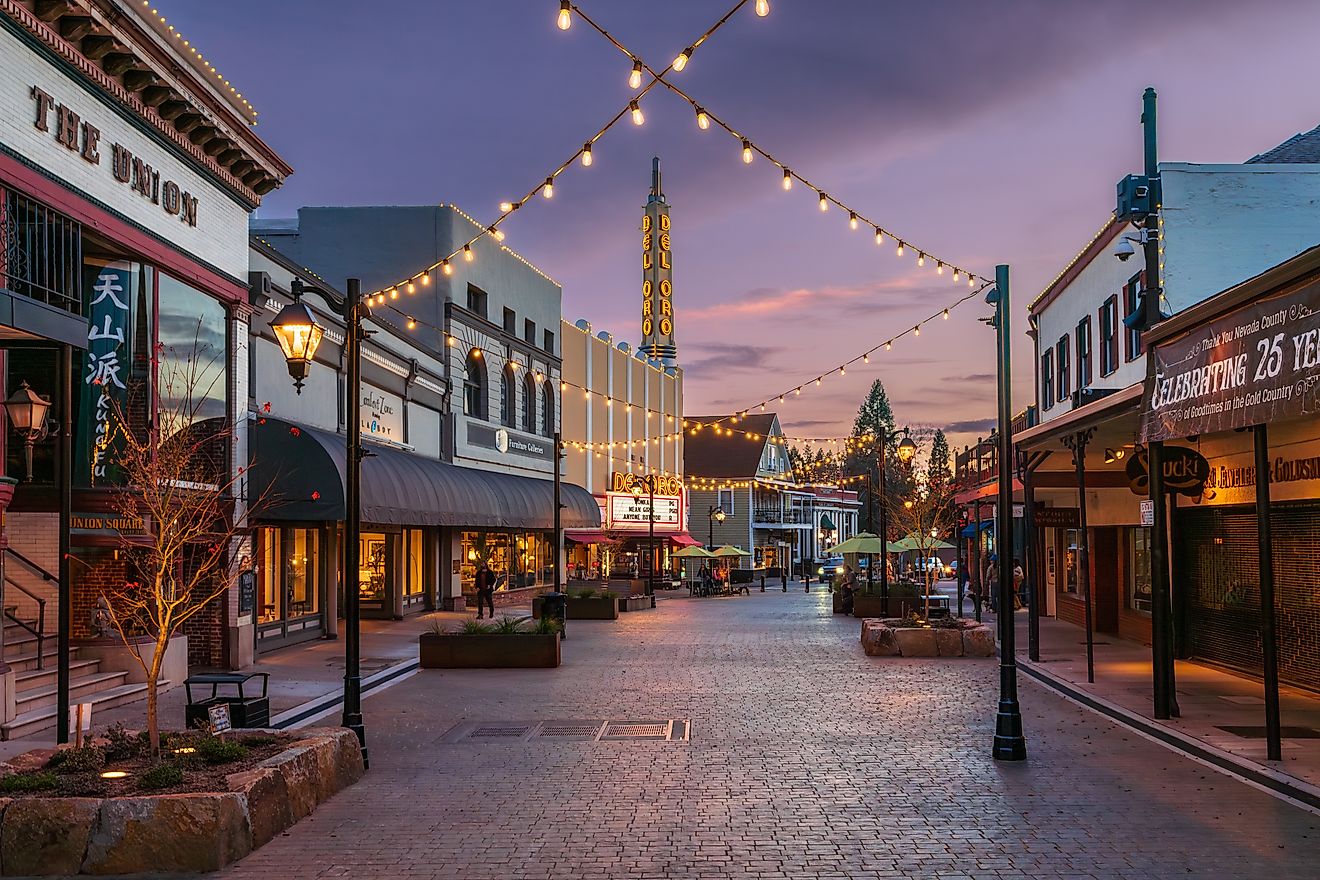
7 Undiscovered Small Towns in Northern California

34 Facts About Orenburg
Written by Morna Boger
Modified & Updated: 01 Aug 2024
Reviewed by Jessica Corbett
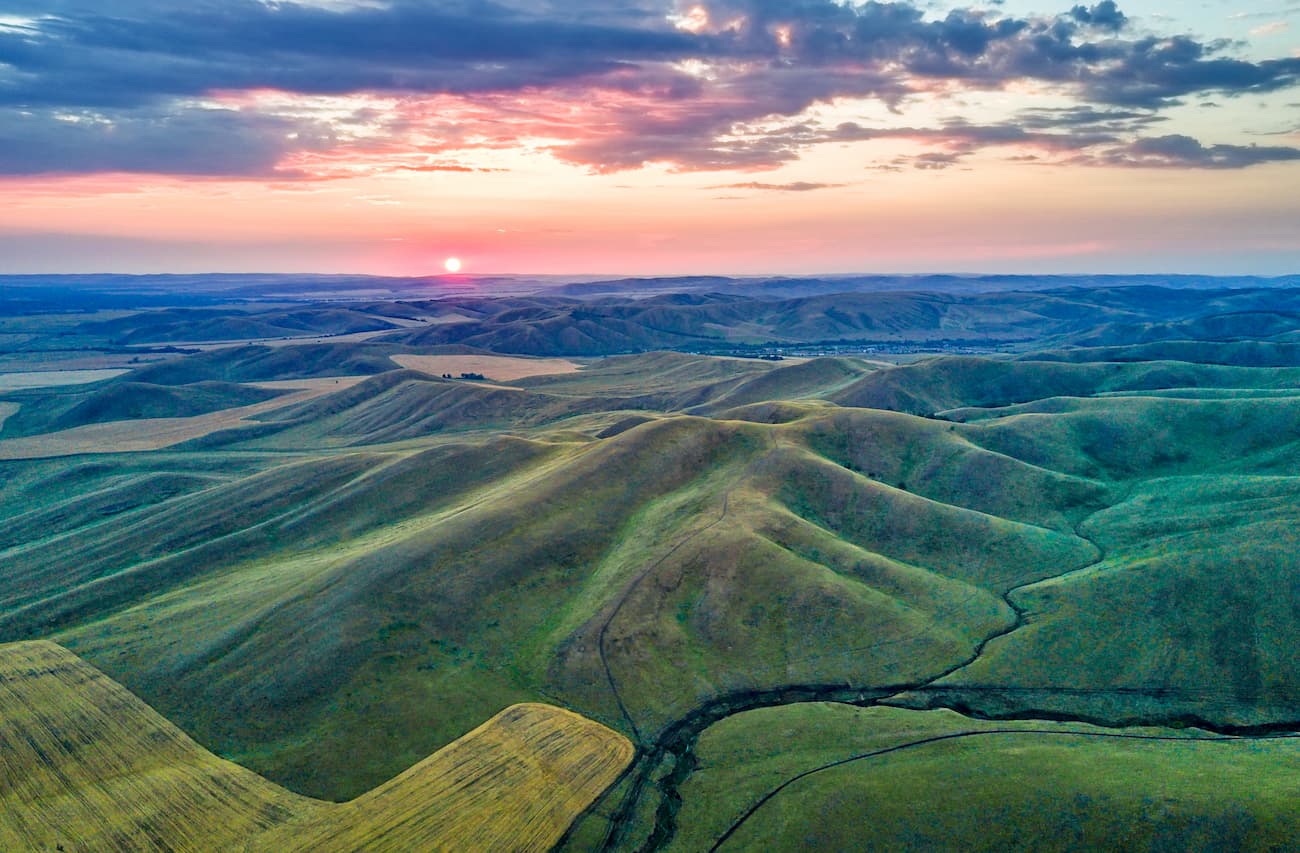
Orenburg, located in southwestern Russia, is a city steeped in rich history and cultural heritage. With its strategic position on the border between Europe and Asia, Orenburg has been a melting pot of various civilizations throughout the centuries. This vibrant city is known for its architectural marvels, picturesque landscapes, and a vibrant arts and music scene. In this article, we’ll delve into 34 fascinating facts about Orenburg that highlight its unique charm and significance. From its role as a trading hub on the Silk Road to its contributions to Russian literature and its status as the gateway to the Kazakh steppes, Orenburg offers a wealth of captivating stories waiting to be explored. So let’s dive in and discover the wonders of this enchanting Russian city!
Key Takeaways:
- Orenburg, a city in Russia , is a unique blend of Russian and Asian cultures, known for its stunning landscapes, traditional crafts, and vibrant festivals.
- With its rich history, warm hospitality, and diverse cultural influences, Orenburg offers a memorable experience for visitors, making it a city that captures hearts.
Orenburg is located in the southwestern part of Russia, near the border of Kazakhstan.
With its strategic location, Orenburg serves as a gateway between Europe and Asia, making it an important cultural and economic center.
The city got its name from the Or River.
The Or River flows through the city and is one of its most defining features, providing a picturesque backdrop for Orenburg’s stunning landscapes.
Orenburg is known as the “Asian Capital of Russia.”
Its proximity to Asia has heavily influenced Orenburg’s culture, cuisine, and traditions, creating a unique blend of Russian and Asian flavors .
Orenburg is famous for its traditional craft of Orenburg shawls.
Orenburg shawls are hand-knitted using the finest goat down, resulting in lightweight yet incredibly warm accessories cherished by people all over the world.
Orenburg is home to the Orenburg Cossacks.
The Orenburg Cossacks have a rich history dating back to the 18th century and played a significant role in defending Russia’s borders.
Orenburg is blessed with breathtaking natural landscapes.
From the Ural Mountains to the vast steppes, Orenburg offers a paradise for nature lovers, with opportunities for hiking, camping, and wildlife spotting.
The Orenburg State Puppet Theater is a must-visit attraction.
This unique theater showcases captivating puppetry performances that both children and adults can enjoy, adding a touch of magic to the city.
Orenburg has a rich literary heritage.
Renowned Russian writers such as Ivan Goncharov and Valentin Kataev have significant ties to the city, leaving behind a literary legacy that continues to inspire.
Orenburg is home to several museums and art galleries.
Art enthusiasts can explore the Orenburg Regional Museum of Fine Arts, which displays a diverse collection of Russian artwork spanning various periods.
The Orenburg Tsvetnoy Boulevard is a vibrant shopping destination.
From trendy boutiques to traditional markets, this bustling boulevard offers a wide range of shopping opportunities to satisfy every fashionista’s desires.
Orenburg is famous for its delicious cuisine.
Indulge in traditional Russian dishes like pelmeni, borscht, and blini , or sample local specialties such as Orenburg honey cakes and Ural dumplings.
Orenburg hosts various cultural festivals throughout the year.
From music and dance festivals to traditional folklore celebrations, the city comes alive with vibrant colors and joyful festivities that showcase its rich cultural heritage.
Orenburg has a well-developed transportation system.
Traveling within the city is convenient, with an extensive network of buses, trams, and trolleybuses that connect different neighborhoods and landmarks.
The Orenburg Oblast Drama Theater is a hub for performing arts.
The theater presents a diverse repertoire of plays, showcasing the talents of both local and international actors, and captivating audiences with its captivating performances.
Orenburg is a city of education.
Home to several universities and educational institutions, Orenburg offers a wide range of academic opportunities for students pursuing higher education.
The Orenburg Mosque is one of the largest mosques in Russia.
With its majestic architecture and tranquil ambiance , the mosque serves as a symbol of religious diversity and harmony in the city.
Orenburg has a vibrant nightlife scene.
From trendy bars and clubs to cozy cafes and live music venues, the city offers plenty of entertainment options to keep night owls entertained.
Orenburg is known for its world-class sports facilities.
The city hosts various sporting events and has produced numerous notable athletes, particularly in disciplines like football, ice hockey, and wrestling.
Orenburg is a city of historical significance.
Explore historical sites such as the Orenburg Fortress, which played a crucial role in Russia’s defense against nomadic tribes during the 18th century.
Orenburg is a melting pot of cultures.
With its diverse population and cultural influences, Orenburg embraces multiculturalism, fostering an environment of tolerance and acceptance.
Orenburg is known for its warm hospitality.
Visitors will be greeted with open arms and friendly smiles, making their stay in the city a truly memorable experience.
Orenburg is a city of innovation.
The city is home to research institutes and technological centers that contribute to advancements in various fields, including aerospace and energy.
Orenburg is surrounded by natural wonders.
From the stunning Ural Mountains to the tranquil Buzuluk Pine Forest, Orenburg offers numerous opportunities for outdoor adventure and exploration.
Orenburg is known for its strong sense of community.
The residents of Orenburg actively engage in community events and initiatives, fostering a close-knit and supportive environment.
Orenburg has a rich folklore tradition.
Explore the captivating world of Russian folklore through traditional songs, dances, and tales that have been passed down through generations.
Orenburg is home to the Orenburg State University.
As a leading educational institution, the university offers a wide range of academic programs and contributes to research and development.
Orenburg is a city of stunning architecture.
Marvel at the elegant buildings, including the Orenburg Governor’s Residence and the Cathedral of the Assumption, which showcase architectural brilliance.
Orenburg has a rich musical heritage.
From classical symphonies to traditional folk music , the city embraces a wide range of musical genres and hosts various concerts and performances throughout the year.
Orenburg is a green city.
The city is adorned with numerous parks and gardens, providing residents and visitors with peaceful retreats amidst nature.
Orenburg is a city of artistic expression.
Artists and craftsmen showcase their talents through various forms of art, such as painting, sculpture, pottery, and embroidery.
Orenburg is a city of festivals.
From the Orenburg City Day celebrations to the International Orenburg Shawl Festival, the city hosts a range of festive events that bring people together.
Orenburg is known for its healing mineral springs.
There are several health resorts in the region where visitors can relax and rejuvenate in the mineral-rich waters.
Orenburg is a city of vibrant markets.
Immerse yourself in the bustling atmosphere of local markets, where you can find a variety of traditional crafts, fresh produce, and unique souvenirs.
Orenburg is a city that captures hearts.
The charm, beauty, and warmth of Orenburg make it a destination that leaves a lasting impression on all who visit.
Orenburg is a fascinating city with a rich history, vibrant culture, and breathtaking natural beauty. From its iconic monuments and landmarks to its unique traditions and events, Orenburg offers visitors a truly memorable experience. Whether you’re interested in exploring the city’s architectural marvels, immersing yourself in its cultural heritage, or simply enjoying the tranquil beauty of its surroundings, Orenburg has something for everyone.
With its strategic location on the Ural River and its close proximity to the border of Kazakhstan, Orenburg serves as a gateway to the magnificent landscapes of the Southern Urals and beyond. From the majestic Orenburg Nature Reserve to the stunning UNESCO World Heritage site of the Bashkir Ural, nature enthusiasts will be delighted by the wide array of outdoor activities available.
Whether you’re a history buff, nature lover, or simply looking for a unique travel experience, Orenburg is a city that should not be missed. With its warm hospitality and diverse attractions, Orenburg will leave you awe-inspired and longing for more.
Q: What is the best time to visit Orenburg?
A: The best time to visit Orenburg is during the summer months of June to August when the weather is pleasant and most outdoor activities can be enjoyed. However, if you are interested in winter sports or witnessing the enchanting winter landscapes , December to February is also a great time to visit.
Q: Are there any famous landmarks in Orenburg?
A: Yes, Orenburg is home to several famous landmarks such as the Orenburg Fortress, a historic symbol of the city, and the Holy Trinity Cathedral, an architectural masterpiece. The Monument of Orenburg Explorers and the Museum of Regional Studies are also worth visiting.
Q: What are some popular traditional events in Orenburg?
A: Orenburg is famous for its traditional events such as the Orenburg Cossack Fair, which showcases the rich cultural heritage of the region, and the Shashlyk Festival, where you can indulge in delicious barbecue dishes .
Q: Is Orenburg a good destination for nature lovers?
A: Absolutely! Orenburg is surrounded by stunning natural beauty, including the Orenburg Nature Reserve, which is home to diverse wildlife and offers breathtaking hiking trails. The Ural River also provides opportunities for boating, fishing, and picnicking.
Q: Can I explore the Southern Urals from Orenburg?
A: Yes, Orenburg is a convenient starting point for exploring the Southern Urals. You can visit the Bashkir Ural, a UNESCO World Heritage site, and discover its pristine forests, majestic mountains, and ancient rock formations.
Orenburg's captivating history, vibrant culture, and stunning landscapes make it a true gem. From traditional crafts to delectable cuisine, this city offers a wealth of experiences. For football enthusiasts, exploring the intriguing facts about FC Orenburg promises an exciting journey into the world of sports.
Was this page helpful?
Our commitment to delivering trustworthy and engaging content is at the heart of what we do. Each fact on our site is contributed by real users like you, bringing a wealth of diverse insights and information. To ensure the highest standards of accuracy and reliability, our dedicated editors meticulously review each submission. This process guarantees that the facts we share are not only fascinating but also credible. Trust in our commitment to quality and authenticity as you explore and learn with us.
Share this Fact:
- Work & Careers
- Life & Arts

COMMENTS
On our first 6-month road trip through Europe, we discovered some hidden gems that were perfect climbing destinations, especially for beginner climbers like us. Not only were these great rock climbing destinations, but most of these places are great destinations in themselves. The towns were either cute or the surrounding nature was worth ...
Hwo / Getty Images. The South of France may be associated with luxury, but it's easy to mix in a little rock climbing adventure in Les Calanques, a rocky series of mountains and ridges around Parc National des Calanques.Many routes have Mediterranean views and while climbers will find routes of all levels (there are sport, trad, and bouldering routes), non-climbers in your group will have easy ...
The birthplace of both mountaineering and rock climbing, Europe is home to some of the most incredible rock climbing in the world today, from sport crags to boulderfields to large alpine rock faces holding committing traditional routes. ... European Rock Climbing Trips. References. Flying Buttress Direct (retrieved on 11/28/2022) https://www ...
The Crag Journal. Climbing in Norway: A Scandinavian Road Trip. 1st Sep 202219th Jul 2024 TheCragJournal. We were fortunate enough to spend 7 weeks in Norway, enjoying a stunning road trip and sampling many of Norways best climbing areas. We drove up Sweden to arrive in Northern Norway in peak climbing season, starting with Lofoten.
8. Céüse. Perhaps the most famous climbing area in France, and one of the most well-known crags in Europe, Céüse has certainly earned its reputation. Although the approach hike is pretty brutal, ...
Europe rock climbing road trip: Join for all 8 weeks or 1 week: From €690 to €3,490 for 8 days. Enquire Now Book now. 8 week long ultimate Europe rock climbing road trip through 6 countries. Join the whole trip or just a week or 2 sampling the best sport climbing crags in Europe.
Eat, sleep and breathe climbing during this sport climbing road trip in the Czech Republic. This 8-day climbing trip is part of the longer, bigger and pumpier Europe Rock Trip. Book one week, multiple weeks or join for the full 60-day trip.
It is the most southerly of the destinations for rock climbing in Europe. The walls of the gorge are steep, so make sure to exercise caution while climbing them. There are over 800 multi-pitch and single pitch routes. For your rock climbing trips in Europe, El Chorro is the perfect spot. Nearest airport: Malaga Airport Difficulty level: Moderate
3. Tenerife, Spain. Tenerife is a fantastic year-round climbing destination, offering stable weather, 400km of coastline, excellent food, and awesome crags - all within a short drive from one another. The island's characteristic volcanic basalt makes for some unique, varied 3D climbing.
AGIOFARAGO, CRETE. Sun, sea, and superb climbing. Situated on the southernmost side of the Crete, Agiofarago is one of many famous climbing regions on the island. Known for its sharp and jagged rock formations, the area is characterised by some of the toughest climbs you can find in Europe. With both single and multi-pitch routes hitting 8b+ in ...
Enjoy a half-day sport climbing experience in Provence, in southern France, along Rock Climbing Instructor Guillaume. Join a program suitable for all levels, in the Calanques or in other great spots near the cities of Marseille, Cassis and La Ciotat. From USD 64 per person for 7 travellers. +1 days.
Every weekend the European rock climbing road trip will visit a different spot. Stopping on route to pick up and drop off climbers at the nearest airport. Our clients come from a range of countries around the world and make up a diverse group that have one thing in common - a love for climbing. ...
The limestone cliffs surrounding the idyllic hilltop village of Siurana are of excellent quality and known for their thin, technical lines with incut pockets and sharp edges. Siurana probably is Europe's most known sport climbing destination with over 1.500 routes suitable for all levels. The topos for Siurana and surrounding areas (like ...
Beginner to advanced courses, or private custom trips with optimal flexibility! Climbing classic, limestone, multi-pitch routes at Arco and Lake Garda amongst the vineyards and castles. Trip Details. Guided Rock Climbing Trips, Courses and Camps in the Alps, Dolomites, Provence, Arco, Spain and anywhere in Europe with IFMGA Certified Mountain ...
Rock Climbing trip to Orpierre and Céüse in the French Alps. Holiday Price: Adult: 798€ to 931€. Rock Climbing, Mountaineering and Via Ferrata Trip. Guided rock climbing weekend at the world famous Céüse, Orpierre and other local climbing sites in the Southern French Alps. Perfect for climbers of all levels. Fitness level: Moderate to high.
Phone +1 250-489-8540. Web Visit website. Located in British Columbia, Canada, the Bugaboos are a small mountain range that is big on rock climbing. Offering a smilier experience to the French Alps in Europe, this amazing location has a number of world-renowned routes that lure in top climbers from across the globe.
Rock & Sun is world's number 1 provider of rock climbing holidays, courses and private guiding. Rock & Sun has highly qualified and experienced climbing instructors in the Costa Blanca, Orpierre, Kalymnos, Thailand, Sardinia, the Dolomites, Mallorca, El Chorro, Morocco, Malta and the UK. They also offer Bouldering Trips to Fontainebleau and ...
We offer rock climbing holidays from 5-14 days with lodging, transportation and private guiding all included. All the logistics are taken care of leaving you to enjoy the climbing that your personal rock guide chooses for you based on your abilities and desires. Rock climbing internationally with a highly-trained American mountain rock climbing ...
To find out how to start rock climbing, we interviewed mountain guides, coaches and professional climbers for all their tips and tricks. Here's everything you need.
A first glimpse of Timor-Leste(Louise Heywood). I strap on my seatbelt with a mix of excitement and trepidation. The propellers whirr into action as our Dash 8 buzzes along the runway and lifts ...
There's nothing quite like hitting the road and driving in search of some special spots, and Europe is the ideal place for a road trip. A continent that offers a vast array of cities, attractions ...
Here are the world's largest deposits of rock salt. Sol-Iletsk is also known for its salt lakes and mud lakes. Salt lakes do not freeze, even in extreme cold: From depths of 6-10 feet to the ...
This scenic road along Cape Cod is also called the Old King's Highway. It cuts through a wealth of timeless historic sites, making it one of the best road trips to take in Massachusetts. The highway spans 62 miles (100 km) between Bourne and Orleans and traverses a combination of preserved farmland, salt marshes, and coastline.
Best Chinese Restaurants in Orenburg, Orenburg Oblast: Find Tripadvisor traveller reviews of Orenburg Chinese restaurants and search by price, location, and more.
Orenburg is located in the southwestern part of Russia, near the border of Kazakhstan. With its strategic location, Orenburg serves as a gateway between Europe and Asia, making it an important cultural and economic center.. The city got its name from the Or River. The Or River flows through the city and is one of its most defining features, providing a picturesque backdrop for Orenburg's ...
1. Pedestrian bridge between Europe and Asia. 251. Points of Interest & Landmarks • Bridges. By J2Mercier. Nice to see Oural and this beautifull bridge. Pouchkine Museum is situated near by and Sovietskaia street behin. 2. National Village Cultural Complex.
The Thelma & Louise jibes had been coming from every quarter since we had first talked about our road trip. As they had 30 years ago, when I had done a similar drive — with a different friend ...